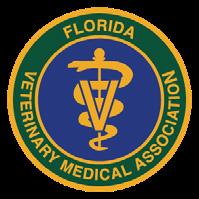

Dr.



Dr.
Greetings Colleagues,
Dr.
Dr.
Dr.
Dr.
Dr.
This has certainly been a year unlike any other. It is hard to believe that this is my last letter to you; as I complete my presidency, it seems the year has flown by. I have said more than once that, for me, this year has been a blessing, occasionally disguised as adversity. This remains so true as I reminisce about those who have touched my life in 2020 and 2021.
I am thankful for our FVMA staff at headquarters:
• Cyndi Whitaker and Natalie Schol, who have skillfully navigated the challenges of providing CE during a pandemic and who continue to plan for future meetings and CE.
• Brandon Wilson, Jason Smith and Erica Tomberlin, who serve our members during these difficult times, offering a cheery voice on the phone, giving needed information to members and creating new ways to engage members.
• Alssa Mathews, Katherine Pearce and Collin Brazan who produce amazing communications from the FVMA through creativity, beauty of visual content and written word.
• Tiffany Stewart, our CFO, who has kept our financials in impeccable order and brought experience and wisdom to the management of our fiscal responsibilities.
• Jim Naugle, who has stepped in as Ann Wade’s deputy while continuing to engage with business development and meeting planning.
• Ann Wade, who has seamlessly assumed charge of our association. During a time when many may have struggled with the loss of a leader and a global pandemic, Ann’s strength and guidance has created an environment of productivity, creativity and enthusiasm.

I am thankful for the time I had with Phil Hinkle and his wife, Janet. The loss of Phil leaves such a void, but my life is forever changed for the better having known and worked with him these last six years.
I am thankful for our FAEP council, whose members have been unwavering in their efforts to serve and engage the equine practitioners of Florida.
I am thankful for and humbled by the members of the Executive Board of the FVMA. They have convened at all hours as we conduct the search for an executive director and work through the many issues of providing governance and direction for our association.
Most of all, I am thankful to be part of such an extraordinary profession and the FVMA. Thank you for the honor of serving as your 93rd president!
Gratefully yours,
 Mary Smart, DVM
Mary Smart, DVM
TO ADVANCE THE VETERINARY MEDICAL PROFESSION, PROMOTE ANIMAL HEALTH AND WELL-BEING, AND PROTECT PUBLIC HEALTH.
Traditionally, during Legislative Action Days (LAD), FVMA staff, members and our legislative consultants meet with Florida senators and representatives in Tallahassee to inform them about the FVMA’s legislative priorities. Legislative Action Days is one of the best opportunities members have to be actively involved in the work of the FVMA, and it is an excellent opportunity for members to engage with the association. The most valuable asset the FVMA has in influencing regulatory and legislative initiatives is the engagement of our membership. This yearly event during the Florida Legislative Session is invaluable to the FVMA's advocacy program. Member participation helps us to present a powerful, unified voice on pending legislation that will impact the veterinary profession and the well-being of the animals we care for across Florida.
This year, due to the COVID-19 pandemic, Legislative Action Days (LAD) 2021 was held through a number of virtual meetings to discuss bills filed, which all FVMA members were invited to attend. The initial meeting in preparation for LAD 2021 was held virtually on February 25 as a luncheon session review in which the bills and the FVMA’s stances were discussed. LAD 2021 officially commenced the week of March 8, during which the FVMA and participating members met virtually with various state representatives and senators.
LAD 2021 was a great success, and we thank all those who were able to attend! Your participation is key to strengthening the voice of veterinary medicine in Florida. We hope all had enjoyable experiences and look forward to next year’s session! In the next issue of FVMA Advocate, we will be providing an update on the bills that we prioritized this year.
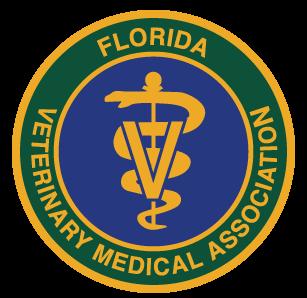
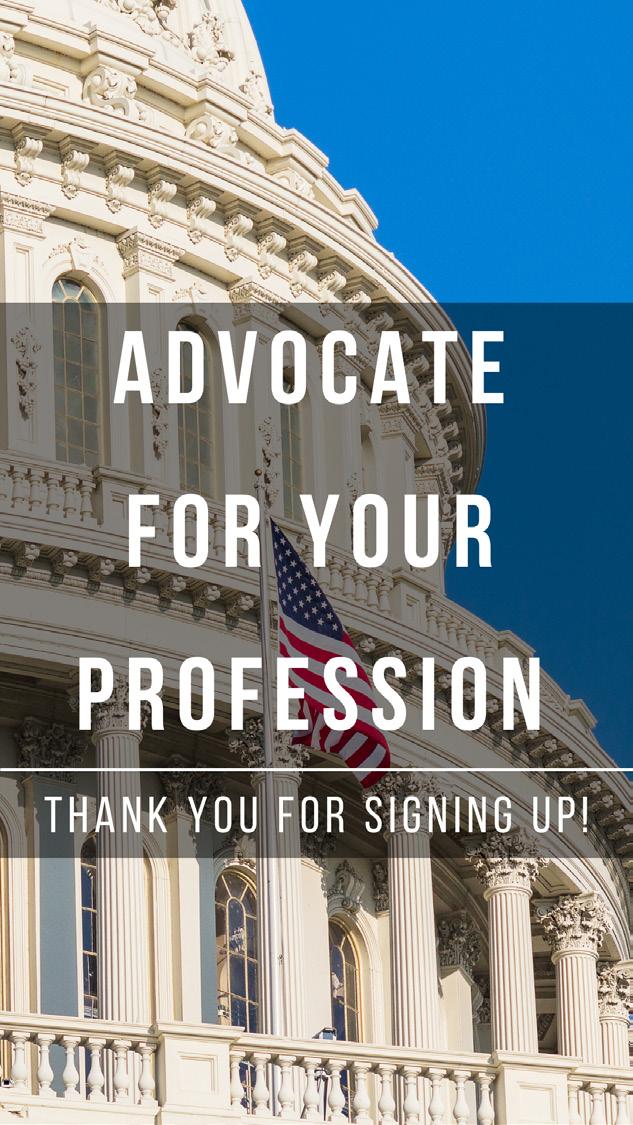


Dr. Jeffrey Laraway of Keystone Heights, Florida, passed away on November 9, 2020, at the age of 58 after a brief illness. Dr. Laraway attended the University of Florida for his undergraduate degree and obtained his DVM degree in 1990 from UF College of Veterinary Medicine. He began working at Interlachen Veterinary Clinic, also known as Shelton Veterinary Clinic, shortly after graduation and continued his career at the same hospital for 30 years until his passing. All of the clients affectionately called him “Dr. Jeff.”
Dr. Laraway enjoyed working on small and large animals along with exotic pets, and he also took care of injured wildlife in the county. He is survived by his wife, Susan, and four daughters: Alicia, Danielle, Melonie and Cecilia.

Born September 10, 1952, in Leonora, Guyana, Dr. Anirude Motie passed away at age 68 on January 9, 2021, in Melbourne, Florida.

Dr. Motie graduated with a doctorate of veterinary medicine and a master of science in microbiology from Tuskegee University in Alabama. He worked as a veterinarian/ microbiologist for the government of Guyana (1982-1984), as well as
Dr. Barry Greene passed away November 29, 2020, due to COVID-19 related complications in Palm City, Florida. He was 66 years old.
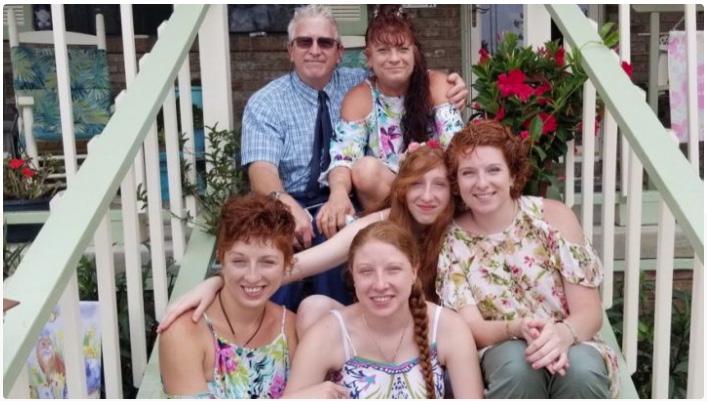

in a private, mixed animal practice. He was also involved in the diagnosis and treatment of zoo animal diseases at the Guyana Zoo in Georgetown, Guyana. Dr. Motie then worked at the Florida Institute of Technology in leprosy research (1984-1988), and published several research articles on leptospirosis, infectious anemia in horses, and leprosy.
In 1988, Dr. Motie opened All Animal and Bird Hospital, where he practiced veterinary medicine for over 30 years. Fondly known as Jai to his family, he was a beloved partner, brother, father, uncle, grandfather and granduncle. He touched many lives with his calm and thoughtful demeanor.
It is the family's hope that a celebration will be held in 2021 in the Nashville, Tennessee area.
A federal grant program designed to help address rural veterinary shortages is accepting applications for 2021 until mid-April. The program, overseen by the U.S. Department of Agriculture's National Institute of Food and Agriculture (USDA-NIFA), provides grants to develop, implement, and sustain veterinary services and relieve veterinarian shortage situations across the United States. Applications for the Veterinary Services Grant Program (VSGP) are due April 16, 2021.
On January 20, 2021, President Biden directed the Acting Secretary of Education to continue the suspension on repayment requirements and interest accrual on federal student loans until further notice. The suspension was set to expire on January 31, 2021. Now, federal student loan flexibilities for the COVID-19 emergency have been extended through at least September 30, 2021.
The spending package approved to fund the federal government through the remainder of fiscal year 2021 provides major wins for veterinarians. These include American Veterinary Medical Association (AVMA) priorities such as One Health, funds to renovate the National Wildlife Health Center and other veterinaryrelated programs.
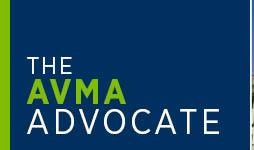
The ERTC was extended until June 30, 2021, through the latest COVID-19 relief legislation passed by Congress. The legislation increased the credit rate from 50% to 70% of qualified wages and increased the limit per-employee from $10,000 per year to $10,000 for each quarter.

Paycheck Protection Program (PPP) borrowers may also still qualify for ERTC, reversing earlier legislation that precluded this. The almost 60% of veterinary practices that took PPP loans should also explore this new option.
Source: AVMA.org
presidents of the AAEP, and two previous presidents of the FAEP as well, gives me large shoes to fill. It's great to know I get the chance to try.”
Dr. Hay is the president and managing shareholder of Teigland, Franklin and Brokken DVMs, Inc. (also known as TFB Equine), a Florida-based racetrack practice in Fort Lauderdale. A




“My year as president of the AAEP will be focused on our current strategic plan,” Dr. Hay said. “I hope that we can continue to make progress on the plan, which focuses on the profession, education and the horse. Each part of the plan has its challenges. Within the profession, work continues on issues of diversity and inclusion, not only within our organization but in veterinary medicine as a whole. Attracting new veterinarians

and retaining them in the equine space is another challenge that the AAEP is attempting to address. Both issues have task forces working aggressively to find solutions to these issues. Hopefully, we can identify ways to effectively combat these problems.”
In addition to these challenges and the ever-present focus on the welfare of the horse, Dr. Hay notes that, like many associations around the world, the COVID-19 pandemic forced the AAEP to move their conferences and other continuing education meetings online. However, while the pandemic may

have pushed the profession into the online education experience a little early, good things have still come of the challenge. Looking ahead, he is eager to make further progress on the strategic plan with the help of the many great people in the veterinary profession.
Dr. Hay is a longtime member of the Florida Veterinary Medical Association (FVMA) and the Florida Association of Equine Practitioners (FAEP). He serves on the AAEP’s Educational Programs Committee, Finance and Audit Committee and as a veterinary spokesperson for the On Call program. He previously served on the board of directors from 2009-2011, as chair of the Racing Committee, as a member of the Professional Conduct and Ethics Committee, and served on the GraysonJockey Club Research Foundation Advisory Committee. He is also a member and former chair of the Racing Medication and Testing Consortium’s Scientific Advisory Committee.
Dr. Hay’s clinical focus is on lameness, performance evaluations and purchase examinations. When not in South Florida attending to racehorses, he travels to many thoroughbred sales where he consults with



 Dr. Scott Hay, DVM, of Teigland, Franklin and Brokken DVMs, Inc. Image courtesy of Dr. Scott Hay.
Dr. Hay (right) in front of the American Quarter Horse Hall of Fame and Museum. Image courtesy of Dr. Scott Hay.
Dr. Scott Hay, DVM, of Teigland, Franklin and Brokken DVMs, Inc. Image courtesy of Dr. Scott Hay.
Dr. Hay (right) in front of the American Quarter Horse Hall of Fame and Museum. Image courtesy of Dr. Scott Hay.
Pulmonary hypertension is defined as increased pressure within the pulmonary vasculature. The pulmonary circulation, including the pulmonary arteries, capillaries and veins, is normally a lowpressure, low-resistance vascular bed. Pulmonary artery pressure (PAP) is normally less than 30 mmHg in systole and less than 10 mmHg in diastole (in contrast to the systemic circulation where typical arterial pressures are 120/80 systolic/diastolic). Pulmonary hypertension (PH) is commonly defined clinically as systolic PAP > 30 mmHg or diastolic PAP > 19mmHg. Echocardiography is used to non-invasively estimate PAP, and is necessary for non-invasive diagnosis. Pulmonary hypertension is a hemodynamic and pathophysiologic state present in a wide variety of cardiovascular, respiratory and systemic diseases. Situations involving increased pulmonary blood flow, increased pulmonary vascular resistance or increased pulmonary venous pressure may be associated with PH. Contributing factors may include endogenous and exogenous vasoconstrictors or impairment of vasodilators, hypoxia (which causes pulmonary vasoconstriction), thrombosis, and vascular smooth muscle proliferation.
In January 2020, the ACVIM established consensus statement guidelines for the diagnosis, classification, treatment and monitoring of pulmonary hypertension in dogs. As pulmonary hypertension is not a singular disorder and a multidisciplinary approach is optimal, the consensus panel was comprised of boardcertified specialists in the areas of internal medicine, cardiology, emergency and critical care, diagnostic imaging, and anatomic pathology. The consensus statement recommendations will be shared within the appropriate sections of this article.1
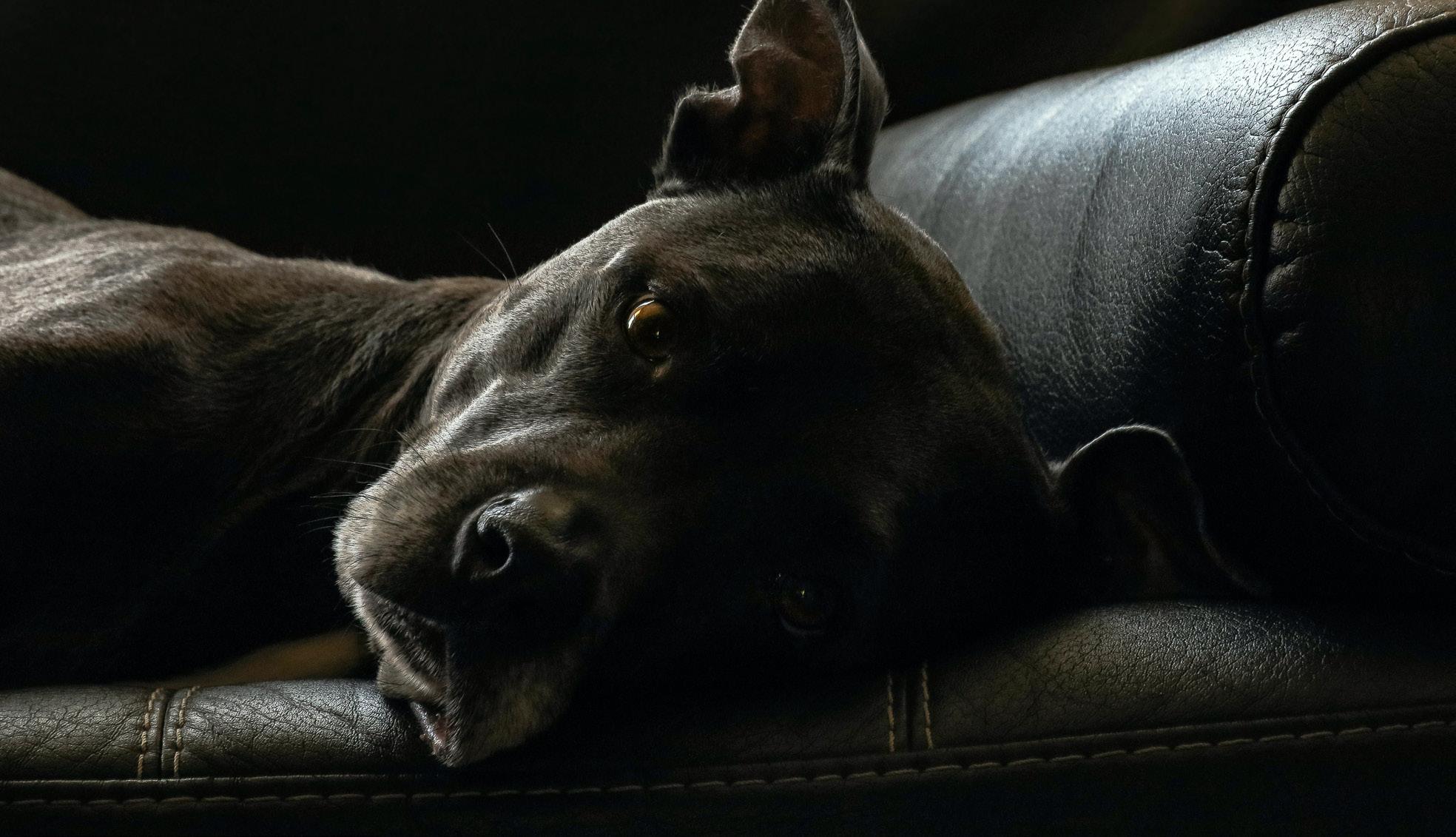
Pulmonary hypertension is classified into six groups or types based on underlying pathologic process. As mentioned above, the underlying mechanism by which these processes cause PH is one or a combination of: increasing pulmonary blood flow, increasing pulmonary vascular resistance (vasoconstriction, pulmonary arterial obstruction, pulmonary arterial remodeling), or increasing pulmonary venous pressure, thereby causing PH upstream (Figure 1).
Table 1 below summarizes the groups and associated underlying diseases common in veterinary medicine. Treatment will involve not only addressing the hemodynamics of PH, but also treating the underlying cause. Sometimes treatment of the underlying cause alone can produce substantial improvement in or resolution of PH.
Group II PH is one of the most common types of PH in dogs, with as many as 15-30% of dogs with degenerative mitral valve disease exhibiting PH.2,3 PH is noted far less commonly in cats. PH in the setting of left heart disease is a poor prognostic indicator in humans so it’s identification may prove important in our patients.
Group III PH is another common type noted in dogs, particularly in association with chronic small airway disease. The differentiation of group II (or left-sided CHF without PH) from group III can prove to be a diagnostic challenge given that both tend to occur in geriatric small breed dogs and both produce common presentations (see below). However careful physical examination and thoracic radiographic interpretation can often yield sufficient information to suspect one or the other, which must then be confirmed with echocardiography. The importance of this differentiation lies in the vastly different treatment between the types of PH and potentially prognosis.
When >1 possible cause of PH is present, it is likely that each individual underlying cause is contributing to PH. If the contribution to PH from a comorbid condition is minimal, PH should be classified according to the primary disease. However, if there are potentially substantial contributions from two or more comorbid conditions, the patient should be placed in group VI, encompassing multifactorial mechanisms.1
Most dogs with PH tend to be middle- to older-aged small breeds, reflecting those predisposed to the most common causes of PH, degenerative mitral valve disease (MMVD) and chronic pulmonary disease. Young dogs
Group I – PH due to pulmonary arterial hypertension
Congenital systemic-to-pulmonary shunts (ASD, VSD, PDA)
Necrotizing vasculitis/arteritis
Idiopathic (identified more in humans)
Pulmonary veno-occlusive disease and pulmonary capillary hemangiomatosis
Group II – PH due to left-sided heart disease (pulmonary venous hypertension)
Degenerative (myxomatous) mitral valve disease (MMVD)
Dilated cardiomyopathy
Other left-sided heart disease
Group III – PH due to primary pulmonary disease or hypoxia
Chronic bronchitis
Interstitial pulmonary fibrosis
Neoplasia
High altitude
Reactive vasoconstriction due to hypoxia (e.g. pulmonary edema)
Group IV – PH due to thrombotic or embolic disease
Pulmonary thromboembolism (PTE) (due to disorders associated with hypercoagulability: IMHA, neoplasia, PLN, PLE, hyperadrenocorticism, sepsis, DIC, cardiac disease, etc)
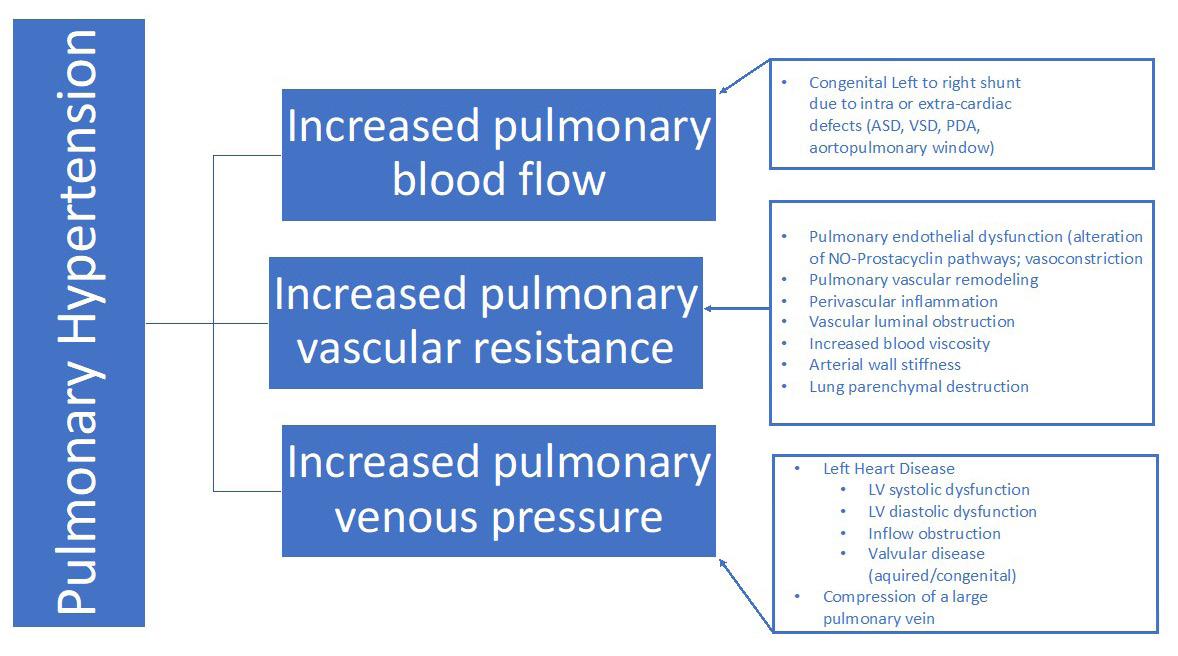
Heartworm disease
Group V – Parasitic disease
Dirofilaria or Angiostrongylus infection
Group VI – PH due to multifactorial or unclear mechanisms
Disorders having clear evidence of two or more underlying groups one to five pathologies contributing to PH
Compressive mass effect (neoplasia, granuloma)
and cats represent another signalment given the association with congenital cardiac shunts. Signalment may otherwise be quite variable for both dogs and cats given the array of associated underlying diseases (see Table 1).
Clinical signs are those associated with the hemodynamic effects of PH (poor cardiac output, right heart failure) or the underlying disease. These may include lethargy, exercise intolerance, weakness or collapse (syncope), cough, tachypnea, dyspnea, or abdominal distension (ascites).
Physical examination may reveal the presence of a rightsided systolic murmur of tricuspid regurgitation. A left apical systolic murmur of mitral regurgitation may also commonly be heard given the association of PH with MMVD, or simply the commonality of MMVD in middle- to older-aged dogs who are also predisposed to respiratory disease. A split-second heart sound, due to delayed pulmonic valve closure, may be heard. Tachycardia may be present in hypotensive patients or patients with heart failure, whereas profound sinus arrhythmia may be present in patients with pulmonary disease. Signs of
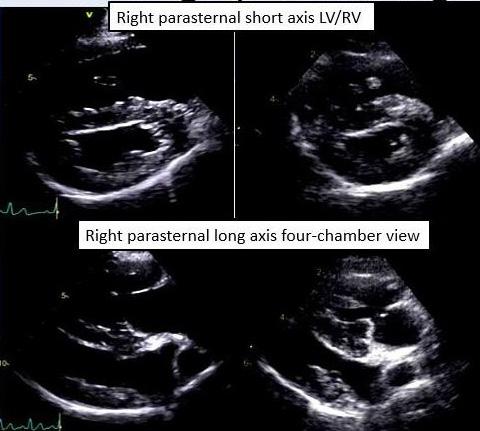
reduced cardiac output or poor oxygenation including pale or cyanotic mucous membranes and weak pulses may be noted. Lung auscultation may reveal pulmonary crackles, wheezes or increased lung sounds. Jugular venous distension or abdominal distension (ascites), +/- a palpable fluid wave, may be noted.
Diagnosis necessitates documenting the presence of and quantifying the degree/severity of PH, and determining the underlying cause or disease. Invasive measurement of pulmonary artery pressure via pulmonary artery catheterization is rarely performed or necessary, as PAP may be non-invasively determined by echocardiography.
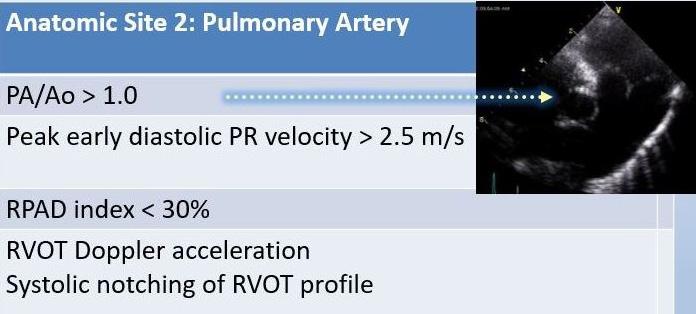
Doppler echocardiography is used to non-invasively estimate PAP. In the absence of right ventricular outflow tract or pulmonic stenosis, peak velocity of the tricuspid regurgitation (TR) signal on continuous wave Doppler is used to estimate peak systolic PAP. Velocity is translated into pressure gradient using the modified
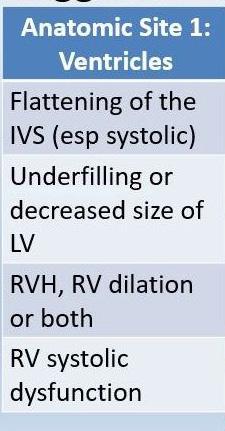 Image 1: Echocardiographic imaging of the ventricles with findings suggestive of pulmonary hypertension. Image courtesy of Dr. Amara Estrada.
Image 2: Echocardiographic imaging of the pulmonary artery with findings suggestive of pulmonary hypertension.
Image courtesy of Dr. Amara Estrada.
Image 1: Echocardiographic imaging of the ventricles with findings suggestive of pulmonary hypertension. Image courtesy of Dr. Amara Estrada.
Image 2: Echocardiographic imaging of the pulmonary artery with findings suggestive of pulmonary hypertension.
Image courtesy of Dr. Amara Estrada.
Bernoulli equation ΔP = 4V2, where ΔP is the pressure gradient between the right ventricle (RV) and the right atrium (RA), and V is the peak TR velocity. Estimated RA pressure may be added to the pressure gradient to estimate PAP. In this manner, peak TR velocity >2.8 m/s is abnormal and indicative of PH. Severity of PH is typically based on the following RV-RA pressure gradients:4,5,6
• Mild PH: 35-50 mmHg (TR 2.9-3.5 m/s)
• Moderate PH: 51-75 mmHg (TR 3.6-4.3 m/s)
• Severe PH: > 75 mmHg (TR > 4.3 m/s)
Peak velocity of pulmonic insufficiency (PI) is used to estimate diastolic PAP, with PI velocity > 2.2 m/s (pressure gradient > 19mmHg) being abnormal.
Structural changes accompanying PH noted on two-dimensional echocardiography may include main pulmonary artery dilation, RV concentric and eccentric hypertrophy (thickening and dilation, respectively), RA dilation, flattening of the interventricular septum, vena caval enlargement, and a small left heart from hypoperfusion (volume underloading). These findings may be particularly important to support a diagnosis of PH in patients in which PAP cannot be estimated due to lack of
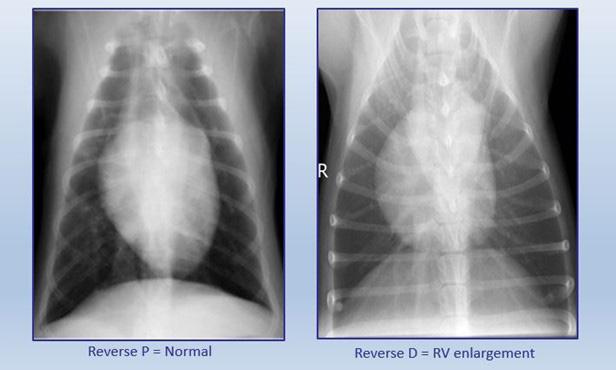

TR or PI. Occasionally a pulmonary thrombus or heartworms may be visualized. If PH is due to left-sided heart disease, then left ventricular dilation, left atrial dilation, thickened mitral valves and mitral regurgitation on color and spectral Doppler (in MMVD), or reduced left ventricular contractility (in DCM), will be present. Note that PH secondary to left-sided heart disease alone tends to be mild to moderate at most.
While not diagnostic for PH, radiographic findings that are suggestive of PH include main pulmonary artery or pulmonary artery branch enlargement, tortuous or blunted pulmonary arteries (in heartworm disease), right-sided cardiomegaly, and pulmonary infiltrates. Left-sided cardiomegaly and enlarged pulmonary veins are present when PH is due to left-sided heart disease. An enlarged caudal vena cava and pleural effusion may be noted with right heart failure. Conversely some cases of PH may have minimal radiographic change, and PH cannot be ruled out on the basis of normal radiography. Absence of pulmonary changes in the face of dyspnea is suggestive of acute PTE, but may also be found in idiopathic or primary PH.
Image 3: Lateral and VD thoracic radiographic findings suggestive of pulmonary hypertension. Image courtesy of Dr. Amara Estrada. Image 4: VD thoracic radiographic findings suggestive of pulmonary hypertension. Image courtesy of Dr. Amara Estrada.Routine laboratory test findings are non-specific and reflect the underlying disease. Nevertheless, CBC, biochemistry profile and urinalysis are indicated in the investigation of underlying diseases (see Table 1). A heartworm test should be performed in endemic areas.

Biomarkers such as NT-proBNP may have value in identification of PH since dogs with respiratory disease and PH (Group III PH) have higher values than those with respiratory disease without PH, and NT-proBNP values correlate with TR velocity. However,
NT-proBNP will not differentiate PH due to respiratory disease (Group III) from PH due to left-sided heart disease (Group II) or from CHF as values may be elevated in all of these scenarios.
Given the commonalities in signalment and presentation of dogs with left-sided heart failure and primary respiratory disease, and the challenge in differentiating these clinically, the following table outlines some parameters that may be helpful on initial evaluation.
Physical examination
Loud left apical systolic heart murmur
+/- Right-sided systolic heart murmur
+/- Right-sided systolic heart murmur
+/- Left apical systolic heart murmur (if happens to have concurrent MMVD)
Frequently tachycardic May have sinus arrhythmia
Pulmonary crackles tend to be finer
Thoracic radiography
Left atrial dilation
- Loss of caudal waist on lateral
- Left atrial and auricular bulges on DV
Pulmonary venous distension
Left ventricular enlargement
- Tall cardiac silhouette on lateral with dorsal elevation of trachea (note, however, that right heart enlargement can have same effect in some cases)
Pulmonary crackles may be coarser and louder
Absence of left atrial dilation
Main pulmonary artery dilation
- Loss of cranial waist on lateral
- Bulge at 1-2 o’clock on DV
+/- Dilation or tortuosity of peripheral pulmonary arteries
Right ventricular enlargement
- Wide cardiac silhouette with >2/3 cranial to line connecting carina to apex and increased sternal contact on lateral
- “Reverse D” morphology on DV
Table 2: Physical exam and radiographic findings that may help differentiate between primary respiratory disease and left-sided heart failure. MMVD and left-sided heart failure (Group II if concurrent PH) Primary respiratory disease (Group III PH)As an early diagnostic test in dogs with clinical findings suggestive of PH (see presentation above) after physical examination and thoracic imaging rule out another specific disorder not associated with PH.
When thoracic radiography shows evidence of tortuous, blunted, or dilated pulmonary arteries; asymmetric radiolucent lung fields on DV or VD views; patchy, diffuse alveolar infiltrates; a bulge in the region of the pulmonary trunk, or right sided cardiac enlargement.
In dogs with clinical signs suggestive of PH (see presentation above) and having ascites (modified transudate with non-cardiac causes ruled out), a dilated caudal vena cava on ultrasound, or a dilated caudal vena cava and hepatic veins on abdominal ultrasonography.
In dogs having spent time in endemic areas with a history of confirmed Dirofilaria or Angiostrongylus positivity with clinical signs of infection with either parasite, or thoracic radiographic abnormalities suspected in association with these parasites.
In dogs at high risk for PE/PT/PTE that have developed clinical signs suggestive of PH (particularly with evidence of hypoxemia) and thoracic imaging that fails to identify another underlying cause for the respiratory signs.
When thoracic CT angiography shows evidence of PVDs, pulmonary parenchymal diseases, and PE/PT/PTE.
When histologic examination of lung tissue indicates evidence of widespread PVD.
Treatment should first and foremost be directed at treating the underlying disease, as this alone may result in reduction of PH. However, therapy to directly reduce PAP may also be necessary, as might management of the secondary hemodynamic effects (poor cardiac output, right heart failure). Patients may require oxygen therapy in the immediate term at presentation, particularly when underlying respiratory disease or left-sided heart disease is present. Given the role of hypoxic vasoconstriction in the pathophysiology of some types of PH, this will also have a pulmonary vasodilatory effect.
Treating the primary underlying diseases may involve therapy directed at MMVD, DCM, primary respiratory diseases, heartworm disease or thromboembolic disease due to hypercoagulable states (see Table 1). The reader is directed to other resources or other sections of these proceedings (MMVD, DCM) for therapy of these specific conditions.
Arterial vasodilators may be indicated to decrease PAP in cases of moderate to severe PH and in cases where clinical signs (e.g. syncope) are thought to be the direct result of PH. While there are no pulmonary artery specific vasodilators (they will have systemic arterial effects as well), the most commonly used agents for this purpose are phosphodiesterase-5 inhibitors (PDE5i) such as sildenafil. Sildenafil has been shown to decrease PAP and
improve clinical signs and quality of life in dogs with PH. It is administered at 1-2 mg/kg PO Q 8-12 hr. Tadalafil is another PDE5-I with a longer duration of action. It’s use in veterinary medicine has been very limited to date, with one case report demonstrating efficacy at a dose of 1 mg/kg Q 48 hr in one dog.8 Another commonly used agent is the PDE3 inhibitor pimobendan, particularly in Group II cases due to MMVD or DCM. It possesses vasodilatory as well as positive inotropic effects and is dosed at 0.25-0.3 mg/kg PO Q 12 hr. A combination of both pimobendan and sildenafil may be indicated in some Group II cases, severe PH cases or those with right heart failure due to PH. Other vasodilator therapies used in humans such as endothelin antagonists and prostacyclin analogs are costprohibitive or necessitate continuous or frequent IV or inhalant delivery, limiting their use in veterinary medicine.
Patients with right heart failure due to PH (ascites, pleural effusion) may require centesis to ease breathing if fluid accumulations are substantive. Medical therapy including diuretics (furosemide), ACE-inhibitor (benazepril or enalapril) and pimobendan are usually indicated.
Ongoing monitoring of PH patients is directed at ensuring optimal treatment of underlying diseases, reassessment of PAP estimates using echocardiography, monitoring systemic blood pressure in the face of arterial vasodilator use, and monitoring other indices of perfusion like renal parameters, especially if heart failure is present and diuretics are being used.
Guidelines in dogs with a high probability of PH:
• Exercise restriction
• Prevention of contagious respiratory pathogens using vaccinations and parasitic disease control using chemoprophylaxis in endemic areas
• Avoidance of pregnancy
• Avoidance of high altitude and air travel
• Avoidance of nonessential anesthetic procedures
Recommendations to target underlying diseases or factors contributing to PH
Group 1 PH – secondary to pulmonary arterial vascular disease
Shunt closure or occlusion, provided the shunt is hemodynamically relevant and is exclusively left -> right or becomes so upon administration of pulmonary vasodilators.
Dogs with left -> right shunting and clinical signs of erythrocytosis should be treated by periodic phlebotomy and fluid replacement +/- hydroxyurea administration.
Group 2 PH – secondary to left heart disease
Treatment of left heart disease. Phosphodiesterase 5 inhibitors (Sildenafil) not recommended as first line of treatment.
Group 3 PH – secondary to respiratory disease, hypoxia, or both
Treatment of underlying respiratory disorder, with strategies including:
• Weight loss in obese patients
• Environmental modifications to improve air quality and optimize humidity
• Reduction of recognized triggers of clinical signs
• Reduction of triggers of barking, anxiety and excitement
• Use of a harness instead of a neck collar
Cough suppression, sedation, oxygen supplementation, and, when present, control of secondary infection and inflammation. Consultation with a veterinary oncologist and appropriate treatment when neoplasia is present.
Dogs with brachycephalic obstructive airway syndrome and other causes of upper airway obstruction should be treated medically and surgically when indicated.
Group 4 PH – secondary to PE/PT/PTE
In dogs with PH caused by suspected or confirmed PE/PT/PTE, treatment with antithrombotic agents should be instituted.
In dogs with PH caused by acute PE/PT/PTE having overt RV dilatation and systolic dysfunction associated with systemic hypotension and collapse, immediate use of plasminogen activator may be considered.
Group 5 PH – secondary to parasitic disease
Treatment for heartworm disease or angiostrongylosis is recommended.
Group 6 PH with multifactorial or unclear mechanisms
Treatment should focus on identifying and addressing individual pathology contributing to PH when possible.
Treatment of compressive mass lesion when appropriate.
Table 4: ACVIM consensus statement summary of treatment recommendations for secondary PH as it applies to each PH group.
PDE5i – specifically targets and augments the vascular nitric oxide pathway, addressing pre-PH by decreasing PVR.
• Sildenafil
• Tadalafil
Group 1 PH – secondary to pulmonary arterial vascular disease
PDE5i is often recommended and may have beneficial results.
Close monitoring with administration of PDE5i in dogs with occlusive cellular or fibrotic vascular occlusive lesions is recommended, as fatal acute pulmonary edema can be seen secondary to higher pulmonary blood flow not accommodated by downstream obstruction (seen in humans).
Group 2 PH – secondary to left heart disease
Treatment of left-sided heart disease is the primary objective.
PDE5i is recommended for dogs with clinical signs and sonographic evidence of secondary right-sided heart failure.
PDE5i should only be considered in dogs with no evidence of pulmonary edema.
Addition of PDE5i may be considered in dogs with exertional syncope without another identifiable cause that have failed to respond to other treatments for preclinical LHD (eg. Pimobendan), or for dogs with a high probability of PH with compensated LHF (on medications for LHF with no pulmonary edema) that develop exertional syncope without another identifiable cause. A thorough diagnostic evaluation is advised to rule out alternative causes of syncope.
PDE5i may be considered for dogs with a high probability of PH with compensated LHF that develop cardiogenic ascites (without pulmonary edema). Increase of medications for LHF also need to be titrated up to offset potential risk of pulmonary edema.
Group 3 PH – secondary to respiratory disease, hypoxia, or both
PDE5i is recommended in all Group 3 dogs. In a recent study of dogs with diverse causes of Group 3 PH, administration of PDE5i was the only independent predictor of survival in a multivariable analysis.
Group 4 PH – secondary to PE/PT/PTE
PDE5i may be considered in patients with acute PE/PT/PTE with overt RV dilatation and RV systolic dysfunction.
PDE5i is recommended in addition to anticoagulant treatment from patients with chronic PE/PT/PTE.
Treatment with PDE5i may be considered for dogs with Dirofilaria immitis infection, although the 2018 American Heartworm Society guidelines do not provide recommendations for PH-specific treatment.
Because moderate to severe PH is recognized in approximately 15% of dogs with Angiostrongylus vasorum infection,9 and these dogs have a worse prognosis than those without PH, treatment using PDE5i may be considered.
Because Group 6 disorders have multifactorial mechanisms, arise from independent comorbid conditions, or both, it is critical that treatment targets each underlying pathologic mechanism as outlined above.
Table 5: ACVIM consensus statement summary of primary PH treatment as it applies to each PH group.
Prognosis with PH can be quite variable and is highly dependent on the underlying disease process. Severe PH often carries a poor prognosis, particularly when associated with difficult-to-treat or untreatable underlying conditions such as interstitial pulmonary fibrosis, pulmonary neoplasia, or other advanced pulmonary or cardiac disease. With sildenafil therapy, median survival time in
one study was 175 days, range 28-693 days,7 demonstrating a wide variation. Regardless of the cause of PH, once PH specific treatment is initiated, patients should be monitored for improvement, static condition or progression of disease. Additionally, any identified underlying disorder should be addressed and monitored simultaneously.
Clinical assessments play a major role in evaluation of response to treatment and need for escalation of treatment. Some parameters include:
• Change in exercise tolerance
• Syncope
• Evidence of right-sided heart failure (ascites, pleural effusion, etc.)
• Respiratory rate and effort
PDE5i is often recommended and may have beneficial results.
In stable patients, clinical evaluation may be considered two weeks after starting or changing PH-specific treatment, and then every three to six months after (or at any time when exacerbation of clinical signs occurs).
Although echocardiographic indices of PH may not always correlate with clinical improvement or decompensation, echocardiography may be repeated at the clinician’s discretion. Regularly repeated echocardiograms in clinically stable patients may not be necessary in all dogs with PH.
Other complementary diagnostic tests maybe considered to guide treatment including thoracic imaging, pulse oximetry, arterial blood gases and NT-proBNP.

1. Reinero, C, Visser LC, Kellihan HB, et al. ACVIM consensus statement guidelines for the diagnosis, classification, treatment, and monitoring of pulmonary hypertension in dogs. J Vet Intern Med. 2020: 1-25
2. Serres FJ, Chetboul V, Tissier R, et al. Doppler echocardiographyderived evidence of pulmonary arterial hypertension in dogs with degenerative mitral vslve disease: 86 cases (2001-2005). J Am Vet Med Assoc 2006; 229 (11): 1772-8
3. Yuan JX, Rubin LJ. Pathogenesis of pulmonary arterial hypertension: the need for multiple hits. Circulation 2005; 111 (5): 534-8
4. Kellum HB, Stepien RL. Sildenafil citrate therapy in 22 dogs with pulmonary hypertension. J Vet Intern Med 2007; 21 (6): 1258-64
5. Johnson L, Boon J, Orton EC. Clinical characteristics of 53 dogs with Doppler-derived evidence of pulmonary hypertension: 1992-1996. J Vet Intern Med 1999; 13(5): 440-7
6. Schober KE, Baade H. Doppler echocardiographic prediction of pulmonary hypertension in West Highland white terriers with chronic pulmonary disease. J Vet Intern Med 2006; 20(4): 912-20
7. Bach JF, Rozanski EA, MacGregor J, et al. Retrospective evaluation of sildenafil citrate as a therpay for pulmonary hypertension in dogs. J Vet Intern Med 2006; 20(5): 1132-5
8. Serres F, Nicolle AP, Tissier R, et al. Efficacy of oral tadalafil, a new long-acting phosphodiesterase-5 inhibitor, for the short-term treatment of pulmonary arterial hypertension in a dog. J Vet Med A Physiol Pathol Clin Med 2006; 53(3): 129-33
9. Borgeat K, Sudunagunta S, Kaye B, Et al. Retrospective evaluation of moderate-to-severe pulmonary hypertension in dogs naturally infected with Angiostrongylus vasorum. J Small Anim Pract. 2015; 56: 196-202
Wendy Mandese is a clinical assistant professor in the department of primary care and dentistry at the University of Florida College of Veterinary Medicine. She worked in private practice for 10 years in both Orlando and Gainesville prior to joining the faculty at UF in 2012. She earned a bachelor of arts in music from the University of Florida and a bachelor of science in biology from the University of Central Florida prior to attending veterinary school at UF. Her interests are in canine and feline heartworm disease, preventive medicine, and palliative care. She lives in Gainesville with her husband, two children and four rescued pets.
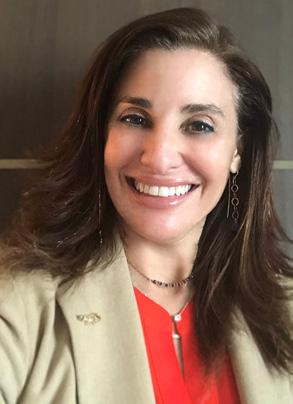
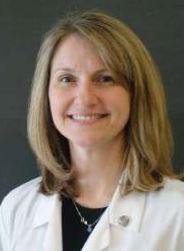
Dr. Amara Estrada is a professor of cardiology and the associate chair for instruction in the department of small animal clinical sciences at the University of Florida College of Veterinary Medicine. She frequently speaks at continuing education meetings both on a national and international level. She enjoys collegial collaborations with her colleagues both within the veterinary cardiology and pediatric cardiology disciplines. Her research interests are on inherited cardiomyopathies and interprofessional education. She graduated from the University of Florida College of Veterinary Medicine and completed her cardiology residency program at Cornell University.
Your clients depend on you to help guide them throughout their pet’s lives – as well as at the end of it. As a Paws & Remember provider, you benefit from our specialized staff training, quality education material, dignified cremation services, and memorial items that are tailored to the needs of the pet owner and their pet. These resources will help your clients cope with their loss and remember their beloved companions in a way that is meaningful to them. Contact us for more information about how we can help you create a more personal memory for your clients.
pawsandremember.com
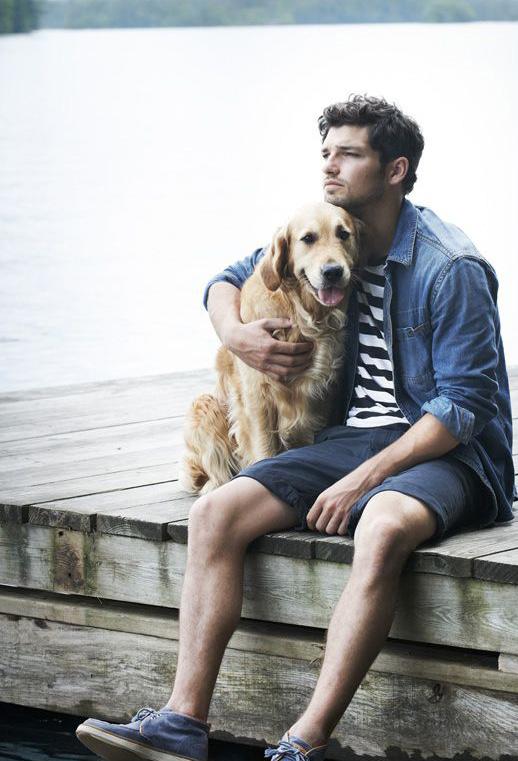

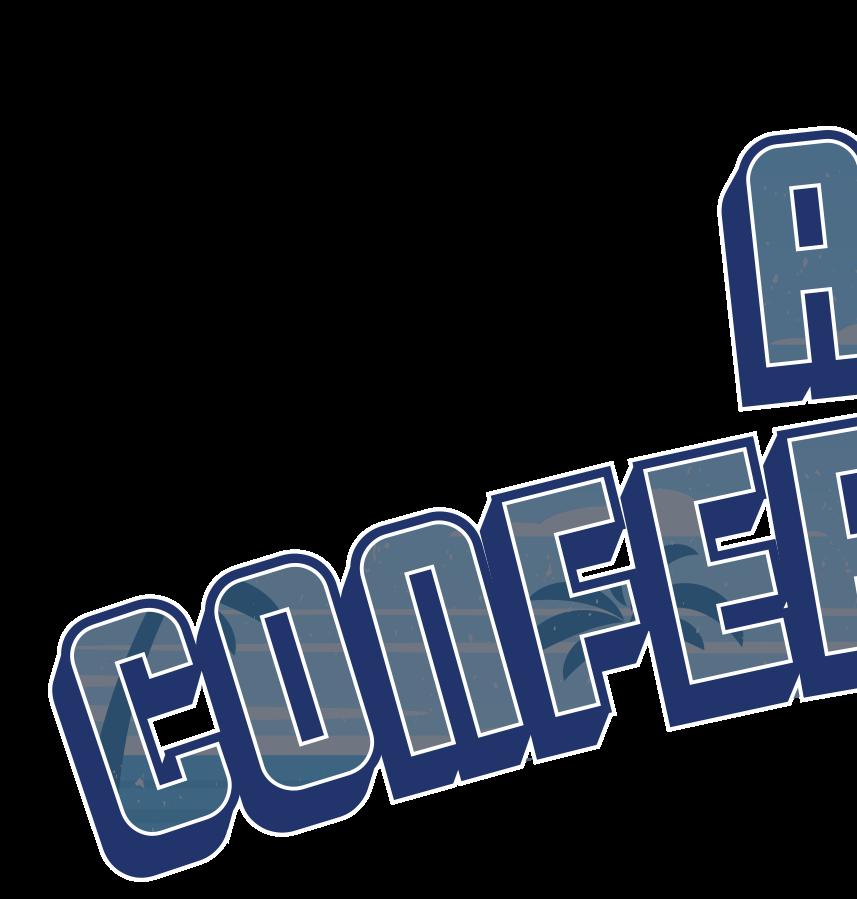

We’re offering world-class continuing education for every member of your veterinary team! Join us in Orlando, Florida, for the 92nd FVMA Annual Conference from July 8-11, 2021, at the Hilton Orlando Bonnet Creek & Waldorf Astoria Orlando.


COVID-19 protocols will be implemented so we can safely come together. We look forward to welcoming you!
Scan the QR code with your phone to register and learn more. Or you can type the link into your browser: cvent.me/7koPR9

• ANESTHESIA AND PAIN MANAGEMENT
•
•
saturday, July
•
2021
•
CRITICAL CARE
•
•
•
•
•
•
• DENTISTRY
•
•
This program has been approved by:
Association of Veterinary State Boards RACE, Provider #532
#0001682
•
•
•
•
This program 532-39371 has been approved for 267 hours of continuing education credit for veterinarians in jurisdictions that recognize RACE approval with 31 maximum hours available to an individual veterinarian attendee. This program has been approved for 124 hours of continuing education credit for veterinary technicians in jurisdictions that recognize RACE approval with 19 maximum hours available to an individual veterinary technician attendee.
▶ MARK ACIERNO, MBA, DVM, DACVIM
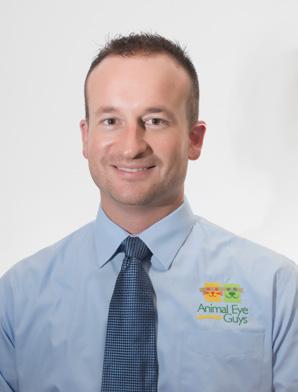
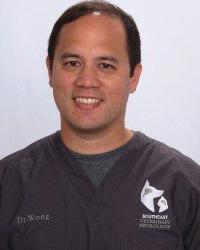
▶ RANDY BASINGER, DVM, DACVS
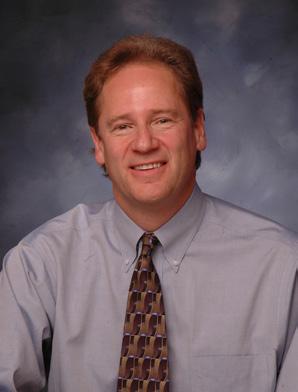
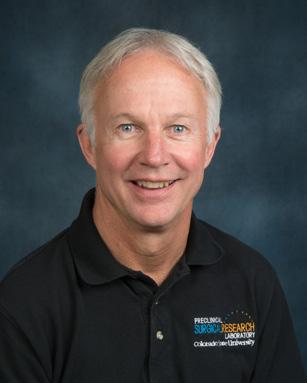
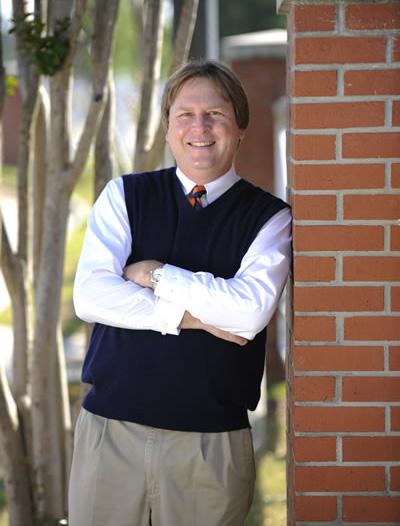

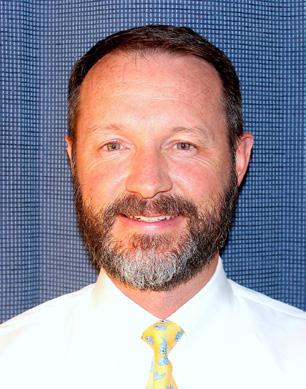
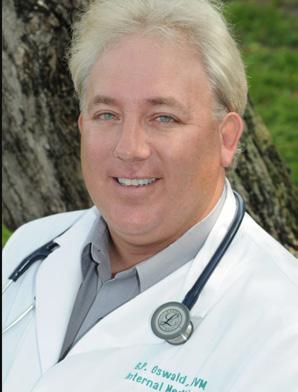
▶ EDWIN BAYÓ, ESQ.
▶ SØREN BOYSEN, DVM, DACVECC
▶ MEGAN BRASHEAR, BS, RVT, VTS (ECC)
▶ SERGE CHALHOUB, DVM, DACVIM (SAIM)
▶ ELIZABETH "BETSY" CHARLES, MA, DVM
▶ RALPH HARVEY, MS, DVM, DACVAA
▶ MICHAEL JAFFE, MS, DVM, CCRP, DACVS




▶ PATTY LATHAN, MS, VMD, DACVIM
▶ TAMI LIND, BS, RVT, VTS (ECC)
▶ ANDREW MACKIN, BVMS, MVS, DVSC, DACVIM, FANZCVSC
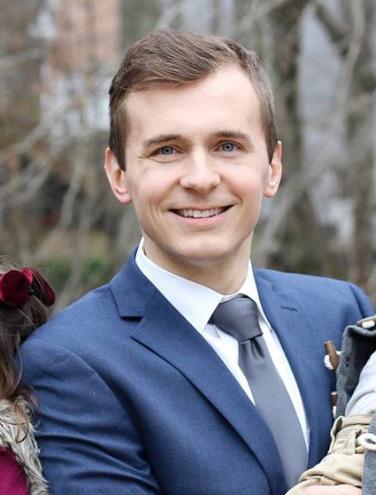
▶ AMY NEWFIELD, MS, CVT, VTS (ECC)
▶ PHILIP RICHMOND, DVM, CAPP, CRT, CHC-BCS, CCFP
▶ DENISE ROLLINGS, CVT (DENTISTRY)
▶ JOSH VAISMAN, CCFP, MAPPCP

▶ KENNETH WALLER III, MS, DVM, DACVR
▶ HEATHER WAMSLEY, BS, DVM, P h D, DACVP (CLINICAL)
▶ DANIEL “BLAKE” WEBB, DVM
 JAN BELLOWS DVM, DAVDC, DABVP
ERIC GARCIA IT & DIGITAL STRATEGIST
DANIEL FOY MS, DVM, DACVIM (SAIM), DACVECC
TIM HACKETT MS, DVM, DACVECC
GARY OSWALD DVM, MS, DACVIM (SAIM)
MICHAEL PEAK DVM, DAVDC
MICHAEL P. JONES DVM, DABVP (AVIAN)
ROBERT KENNIS MS, DVM, DACVD
TERRY O’NEIL CPA, CVA
HOWARD SEIM III DVM, DACVS
MICHAEL WONG DVM, DACVIM (NEUROLOGY)
ROBERT SWINGER DVM, DACVO
TYLER WERNLI SPECIAL PROJECTS MANAGER
TODD TAMS DVM, DACVIM
JACQUELINE WHITTEMORE DVM, PhD, DACVIM (SAIM)
JAN BELLOWS DVM, DAVDC, DABVP
ERIC GARCIA IT & DIGITAL STRATEGIST
DANIEL FOY MS, DVM, DACVIM (SAIM), DACVECC
TIM HACKETT MS, DVM, DACVECC
GARY OSWALD DVM, MS, DACVIM (SAIM)
MICHAEL PEAK DVM, DAVDC
MICHAEL P. JONES DVM, DABVP (AVIAN)
ROBERT KENNIS MS, DVM, DACVD
TERRY O’NEIL CPA, CVA
HOWARD SEIM III DVM, DACVS
MICHAEL WONG DVM, DACVIM (NEUROLOGY)
ROBERT SWINGER DVM, DACVO
TYLER WERNLI SPECIAL PROJECTS MANAGER
TODD TAMS DVM, DACVIM
JACQUELINE WHITTEMORE DVM, PhD, DACVIM (SAIM)

14100 BONNET CREEK RESORT LANE, ORLANDO, FL 32821 P: 888.353.2013
• FVMA Special Rates: Starting at $215, plus taxes
• Group rate extended stay three days pre- and post-conference, based on availability.

14200 BONNET CREEK RESORT LANE, ORLANDO, FL 32821
P: 888.353.2009
• FVMA Special Rates: Starting at $285, plus taxes
• Group rate extended stay three days pre- and post-conference, based on availability.
All room rates quoted above are exclusive of applicable resort fees. There is an optional daily resort fee at the individual guest’s discretion. The resort fee is $45.00 per night, per room. Applicable state and local taxes will be posted to all guest rooms. The optional resort fee covers the following items, services and amenities:
• Kids meals deals and discounts.
• Daily water (two bottles).
• Access to golf club practice facilities.
• Free golf club rental after 2 p.m.
• Unlimited in-room local and 1-800 calls.
• Lazy river tubes and cabana discount.
PRESENTING MORE THAN 300 HOURS OF STIMULATING, QUALITY CONTINUING EDUCATION DELIVERED BY AN OUTSTANDING ARRAY OF DISTINGUISHED SPEAKERS IN AN ENVIRONMENT THAT ENRICHES THE ENTIRE VETERINARY TEAM!
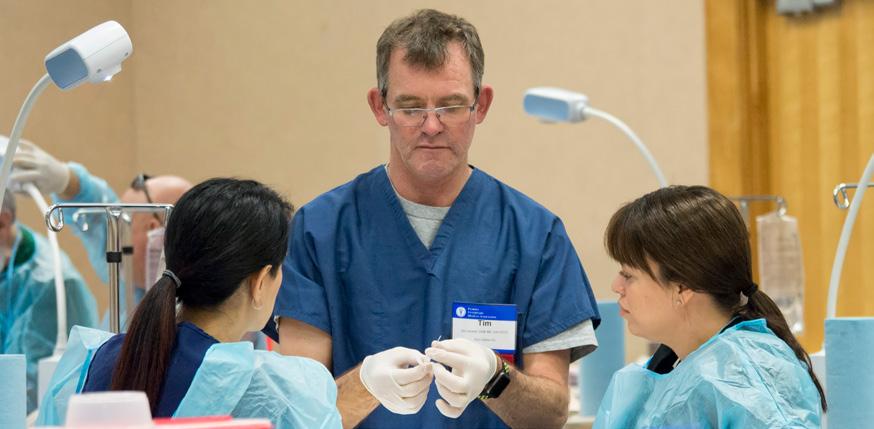
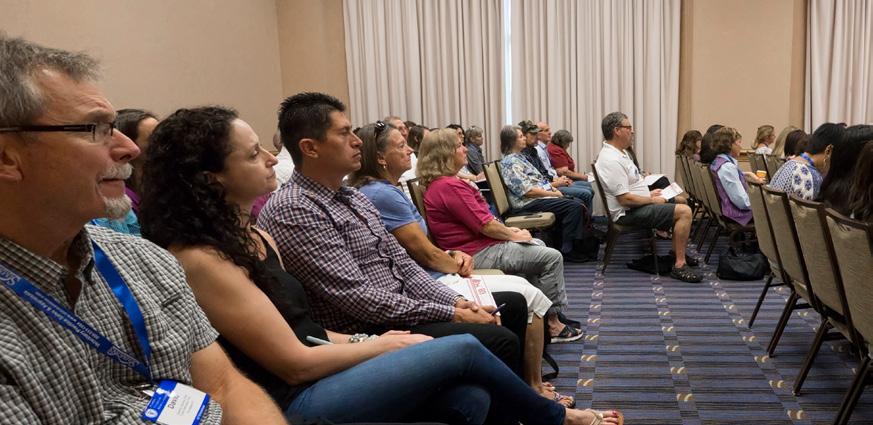

HANDS-ON WET LABS

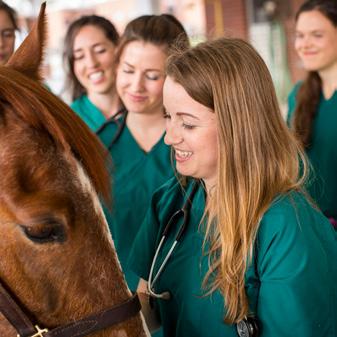
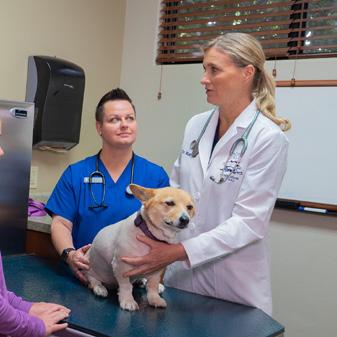

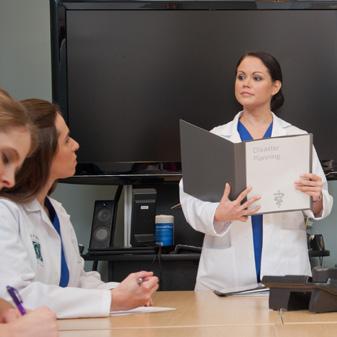


15 CE credits
$175 registration for veterinarians
$75 registration for food animal industry professionals
FREE for CVM Students
As we all move into 2021 and navigate the ongoing COVID-19 pandemic, Florida Department of Agriculture and Consumer Services and the Florida Veterinary Medical Association have been challenged to ensure the Dr. Harvey Rubin Memorial Food Animal Veterinary Medical Conference is held this year. It was a difficult decision to cancel the 2020 meeting, and we had great hopes that we would all be together for 2021. As the year has unfolded and restrictions remain for many, we have made the decision that the 2021 Dr. Harvey Rubin Memorial Food Animal Veterinary Medical Conference must happen and will be held virtually.
The format of the meeting will allow those who register for the conference to view each session at their leisure or “on-demand.” We plan to have an initial launch party, which will be a live ZOOM meeting to provide a welcome and an overview of the processes involved in obtaining CE through a series of on-demand presentations. This launch party will be recorded so that it can be viewed later as well. Most of the CE sessions will be recorded and include some questions to verify attendance and ensure CE credit. Some sessions will be presented once as a live session with question and answer opportunities and recorded for those unable to attend the live sessions. We will include the three-hour "Florida Laws and Rules Governing the Practice of Veterinary Medicine" and "Dispensing Legend Drugs" as part of the 15 hours of CE available in the package. As during our regular conference, two accreditation modules will also be part of the 15-hour package. Visit FVMA.org for more details.
We sincerely hope and plan to have an in person 2022 Dr. Harvey Rubin Memorial Food Animal Veterinary Medical Conference, where we can once again enjoy steak dinner and swamp cabbage with you all.

Please feel free to contact Dr. Diane Kitchen if you have any questions or concerns. Thank you for your ongoing support of this conference.
Diane L. Kitchen, DVM, PhD 850-251-1225Diane.Kitchen@FDACS.gov
3 Credit Hours
• Launch Party includes Tips on Using On-demand Library Webpage Updates from FDACS, USDA and FARAD
• Electronic Documents, Animal Identification Options and Opportunities
• Inside Foreign Animal Disease Investigations and Laboratory Testing for Foreign Animal Disease
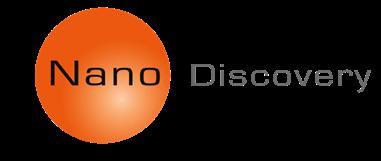
7 Credit Hours
• Biosecurity for Healthy Farms and Healthy Agriculture
• Foreign Animal Diseases 101
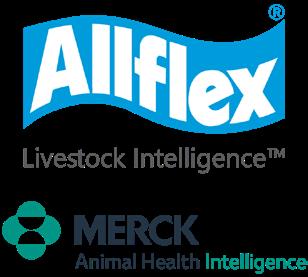
• Heartwater Disease - Overview, Etiology and Ecology
• Implementing Enhanced Biosecurity During a FAD Outbreak
• Overview of African Horse Sickness
• Overview of Foot and Mouth Disease
• Preparing to Implement Secure Beef Supply Chain


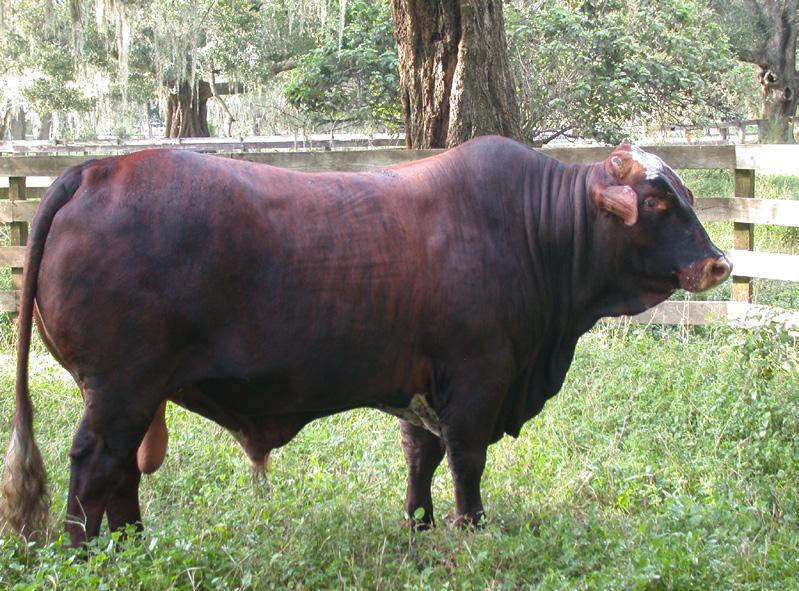
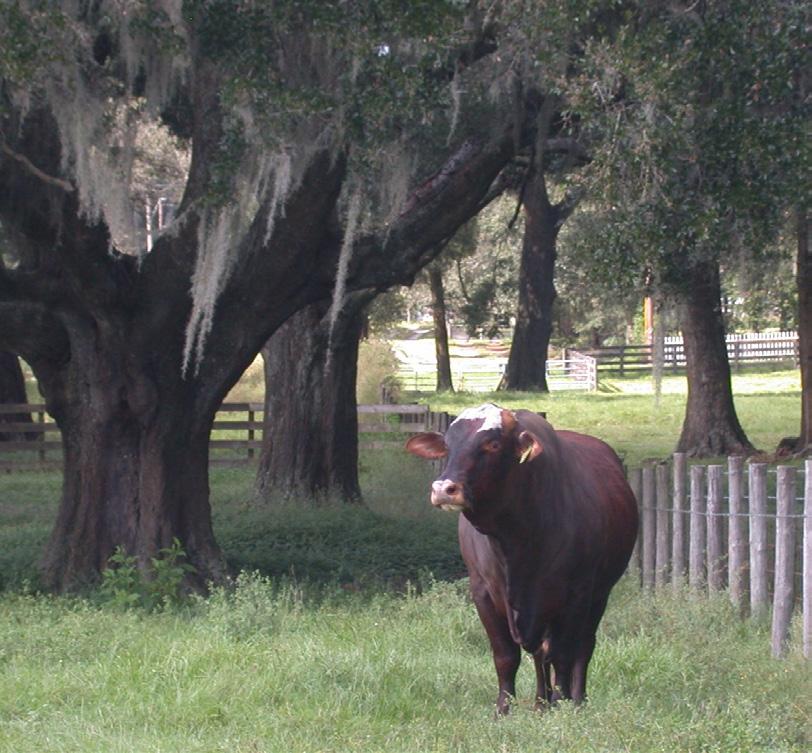
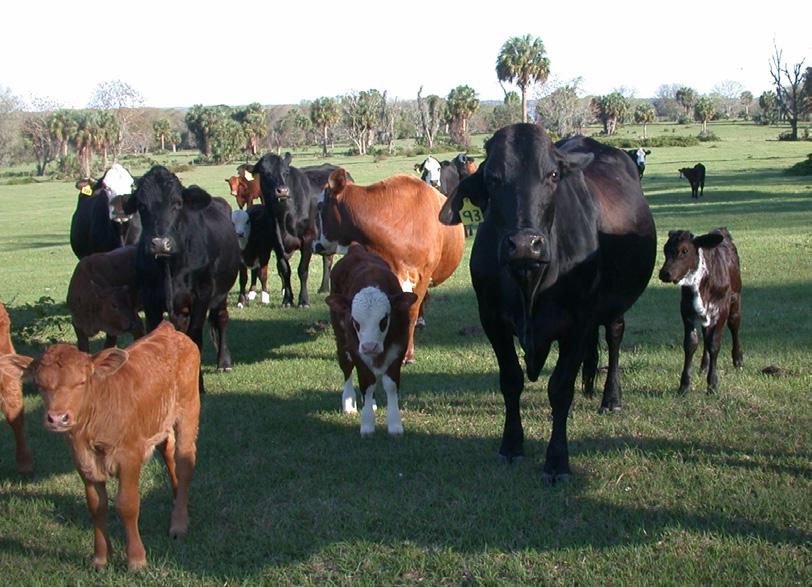
3 Credit Hours
• Florida Laws and Rules Governing the Practice of Veterinary Medicine
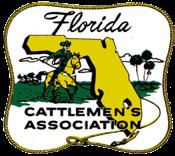
• Dispensing Legend Drugs


2 Credit Hours
• Module 4 - Preventing Disease Introduction and Spread
• Module 32 - Regulating Vaccines and Related Biologics
*Times for live sessions are to be determined. Schedule is subject to change.
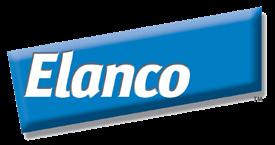
Susie is a credentialed technician at a bustling small-animal hospital. Having joined the practice three years prior, she isn’t the newest tech on the team nor is she the longest in the tooth.

Diarrhea gets Susie fired up.
Well, not the diarrhea exactly. That’s a stinky bummer. But looking at it under the microscope gives her great joy. She can still nostalgically recall the first time she identified a live sample of coccidia.
Actually, pretty much everything in the lab is fun for Susie. Which is why, in her interview, she tried to make it clear she’d love to work the lab as often as possible.
The interviewing manager seemed excited to hire someone with a passion for the lab, but the interviewing manager wasn’t the person assigning daily roles.
That was the purview of the technician supervisor, Dan.
Dan took pride in running an efficient team. He felt like he had his finger on the pulse of everyone and everything, ever aware of who fit best where to maximize the team’s effectiveness that day.
For what felt like months now, Dan had been assigning Cassie to lab, while Susie found herself covering surgery or exam rooms every day.
Aside from missing lab, Susie knew that Cassie struggled to keep up with the in-house lab testing demand. Cassie had a habit of starting a test and finishing it fully before moving on to the next one. As the requests piled up, she’d fall behind, often working through lunch to stay afloat.
The doctors were grumbling and Dan, victim of his own
confidence, was blissfully unaware. He was certain things were running smoothly.
Susie knew a better way. Sure, she’ d love to be in the lab more but truthfully, she just wanted to help the team do better. However, she was scared if she asked Dan if she could help Cassie, he’d perceive it as an attack on his supervisory skills and get defensive and upset.
So she kept to herself. For a while.
Eventually, she could hold it in no longer. So, she did what she thought was the best step. She went to the practice manager, Betty.
Betty intervened, pulling Dan aside and telling him, “Susie tells me that Cassie is falling short in the lab. Dan, it’s your job to make sure we run as smoothly and efficiently as possible. Please replace Cassie with Susie on lab shifts moving forward.” You can guess what happened next.
Dan felt hurt and a bit betrayed. Why hadn’t Susie come to him? Cassie felt embarrassed and angry. Why hadn’t Susie come to her?
In short order, Dan and Cassie found comfort in each other’s dismay. Before long, Susie felt their angry stares, judgmental whispers and cold treatment.
After a few weeks, Susie couldn’t take it any longer. She began looking at college parasitology programs, strongly considering leaving veterinary medicine entirely.
These stories are common in our profession, but they don’t need to be.
Extensive research tells us teams that cultivate a culture of what researchers call “psychological safety” learn faster, make fewer mistakes, have significantly lower turnover and perform at substantially higher levels. As a result, the organization these teams are a part of do better by a variety of objective business metrics. Psychologically safe teams act every day to reduce the barriers of contribution—and they do this on purpose.
You see, no one wakes up in the morning hoping to spend their day at work looking incompetent, incapable and a negative influence on the team’s success. Quite the contrary, veterinary professionals want to appear competent, capable and be a positive, contributing member of the team. This makes the necessary, difficult conversations risky.
If I ask for help, will they think I’m not capable?
If I suggest a better way to do things, will they think I’m just being negative?
Teams that avoid those conversations are less likely to learn, adapt, grow and evolve. I like to think of psychological safety as a culture where we make it safe to soar toward our individual and collective potential, in service to the higher purpose of our work. The thing is this doesn’t happen by accident. We make a team safe to soar. It’s not the default.
The default is the absence of psychological safety. The default is to withhold our shortcomings, failures, hopes and ideas to manage the impression others have of us. The default is to be a normal human being who wants to fit in and feel like they belong. While this may feel safer, it limits our potential.
When Susie saw a better way for Cassie to do things in the lab, or a better way for Dan to schedule the lab shifts, this came from the normal human desire to contribute to the team’s success in service to the higher purpose of the work. When Susie felt scared to talk to Cassie or Dan, this was also a normal human experience in a workplace where it is safer to withhold things than to share them. As a result, Cassie lost an opportunity to grow; Dan lost an opportunity to improve; and Susie lost an opportunity to connect. Everyone lost out.
You might be thinking, “Well, Susie should have just been braver.” After all, in going “above” Dan’s head she set off a cascade that led to her leaving the practice. It was her fault, right?
Yes, Susie could have handled things differently. She could have spoken to Cassie directly, offered to help, or at least mentioned
to Dan that Cassie could use some support. To this I ask, how’s that working for you? Have you been successful finding, hiring and retaining a full team of people naturally brave enough to productively admit mistakes and shortcomings, ask for help when needed, and caringly challenge themselves and each other to learn and improve in service to the higher purpose of the work? This is my point.
Most people are already courageous. The problem is, in many work environments, the fear of looking bad or being punished for using our voice outcompetes the force of our courage. Highly effective teams recognize this truth and work together to overcome it and minimize the barrier of fear. In this way, instead of expecting everyone to be “brave enough,” we cultivate an environment in which their natural bravery is already sufficient. How do we do this?
There are myriad ways to cultivate psychological safety in our teams. One helpful place to start is developing a “Safe Conversation Charter.”
The Safe Conversation Charter is a list of agreements, shared by the team, that provide the guiderails for “how we interact here.” Think of it as the rules everyone agrees to follow when they communicate with each other, especially during difficult or sensitive conversations.
The goal is to make the communication space both safe and productive.
I’ve been consulting with a large hospital of nearly 150 employees. When we gather for leadership development work, there may be as many as 35 people present. To maximize engagement in both safe and productive ways, we utilize five agreements:

1. Everyone’s perspective has value.
2. We are not here to judge. We are here to grow together.
3. We all have opportunities for growth.
4. We all have strengths to offer.
5. During this meeting, we all agree to be present, engaged and participate.
We review these agreements at the beginning of every workshop and remind ourselves of them before any activity that might be challenging or uncomfortable.
I recommend every team build a Safe Conversation Charter as a foundation on which psychological safety can be nurtured. Here’s one way you can create one for your team:
1. Consider the team you want to create the charter for. This can be the entire hospital, a department, an individual team... It’s up to you!
2. Schedule a time of at least 30 minutes where you and the team can gather undistracted and uninterrupted. You really want to focus on this activity. The bigger the team, the longer chunk of time you’ll want to set aside.
3. At least one week PRIOR to the meeting, reach out to everyone on the team. Let them know you’re gathering them in a week to create a Safe Conversation Charter. Share with them why this is important to you and what you hope this will help with. Then, assign them a bit of homework in preparation for the meeting with something like this:
a. “Before next week’s meeting please take some time to think about what needs to be in place for you to feel 100% comfortable sharing all you have to offer with everyone on our team. If you make a big mistake, what would you need in place to feel absolutely comfortable telling everyone immediately? If you don’t know how to do something, what would you need in place to feel absolutely comfortable asking anyone for help? If you see a way someone on the team can improve in their job, what would you need in place to feel absolutely comfortable sharing it with them? Write down your top two-three things you’d need in place to feel 100% safe sharing anything in this team and bring your list to next week’s meeting.”
4. At the meeting, explain again what the team is gathered for and why it is so important to you. Then ask them to write down why it is important to them that the team is safe to make mistakes, admit shortcomings, ask for help and challenge each other to be the best they can be.
5. Next, divide them into small groups (three-four people) and give them ten minutes with the following assignment:
a. Everyone share why this is important to you.
b. Everyone share your list of two-three things you need in place to feel safe.
c. As a group, pick two-three things you all agree need to be in place to feel safe.
6. Re-gather the whole team. Every group shares their list. You collect the list on a board or poster.
7. As a whole team, select the rules you agree absolutely must be in place to make conversations as safe as possible.
8. There you go! You now have your first edition of your team’s Safe Conversation Charter!
Not only is this a wonderful team building activity, but it’ll carry over into everything you do as a team. Revisit
the charter at every meeting and review it before any difficult conversation.
Periodically, challenge the charter. Can it evolve or change to better serve the team currently?
Imagine if Susie’s hospital had one of these in place. How might things would have turned out differently for them all?
You got this—and I’m proud of the culture you’re creating in your practice!
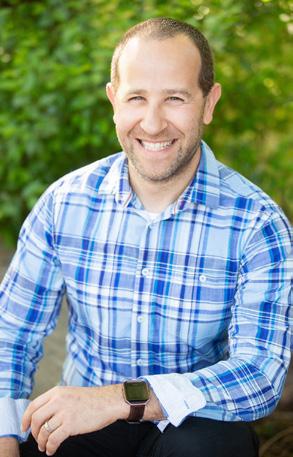
Josh believes all veterinary professionals deserve to feel fulfilled by their work, each and every day. Through his company, Flourish Veterinary Consulting, he combines more than 20 years of veterinary experience, a post-graduate diploma in applied positive psychology and coaching psychology, and education in positive leadership and positive organizational scholarship to help them do just that.
• Stereotactic Radiosurgery (SRS)
• Radiation Therapy
• Chemotherapy
• Surgery / Stent Placement
• Immunotherapy
• CT Scan
• Integrative Therapy

• Clinical Trials
• Nutritional Support
• Bereavement Counseling
Fun fact – Josh is also an avid beekeeper who teaches beginning beekeepers how to tend to their buzzing buddies.QUESTION: I'm a veterinarian pursuing the ECFVG program. Surgical experience is required for step 4 of the program. I presently work as a veterinary technician, and I would like to know what legislation is there regarding foreign graduates performing spays/ neuters in the state of Florida in order to attain their surgical experience? Can I work under a doctor’s supervision or in a rescue facility? If I can, what is the legislative reference that allows this?
A: As a veterinarian in the ECFVG program, the exemption under §474.203(2) seems to be applicable. You should be able to perform spays/neuters under supervision.
(2) A person practicing as an intern or resident veterinarian who does not hold a valid license issued under this chapter and who is a graduate in training at a school or college of veterinary medicine located in this state and accredited by the American Veterinary Medical Association Council on Education or a school or college recognized by the American Veterinary Medical Association Commission for Foreign Veterinary Graduates. Such intern or resident must be a graduate of a school or college of veterinary medicine accredited by the American Veterinary Medical Association Council on Education or a school or college of veterinary medicine recognized by the Educational Commission for Foreign Veterinary Graduates of the American Veterinary Medical Association. This exemption expires when such intern or resident completes or is terminated from such training. Each school or college at which such intern or resident is in training shall, on July 1 of each year, provide the board with a written list of all such interns or residents designated for this exemption, and the school or college shall also notify the board of any additions or deletions to the list.
QUESTION: Do I need to have national accreditation to keep my state accreditation? My practice has been sold, and I am close to retirement. I still want to do interstate health certificates and puppy sales certificates. Also, what records do I need to keep and for how long for the HCCE permit? Like I said, my practice has been sold, and we are moving the business records out for the new owner.
A: For clarification regarding your accreditation question, please contact Robert S. Chadwell at the State Veterinarian’s Office. You can also learn more about the National Veterinary Accreditation Program online at: https://www.aphis.usda.gov/aphis/ourfocus/animalhealth/ nvap
As for the second part of your question, we recommend erring on the safe side and keeping records for three years. According to the Rules of the Drugs, Devices & Cosmetics Program, 61N-1.012(10):
10) All required records must be retained for a period of two years following disposition of the drug, device or cosmetic, or three years after the creation of the records, whichever period is longer; and must be available to the department for such period or as long as records are retained if longer. Records must be retained beyond the retention period if the person has been notified that an investigation or inspection has been initiated by the department and the investigation has not been completed when the mandatory retention period expires.
QUESTION: A pit bull came to our clinic badly bitten and torn up in the left shoulder area with a major artery bleeding. The gentleman who brought him in was not the owner of the dog. The gentleman called the dog’s owner who then texted back that he wanted the pet euthanized. He showed the text to staff but did not authorize or sign anything. He left the dog with us. We could not reach the owner by phone as he did not answer. We contacted the police but could not wait on them to make a decision as the pet was bleeding out. The vet attending the case was very concerned as to where we stood legally. What is FVMA's opinion on the correct course of action?
A: Euthanasia would be appropriate under the circumstances. The veterinarian saw a text message from the owner who wanted the pet euthanized. The other theory is that the dog, being extensively injured and having been abandoned, was handled humanely by the veterinarian.
QUESTION: When a client comes back for an expected refill of a medication, do they have to be put under the doctor's name that refilled it or can it be refilled under another category like OTC? The doctor's name is still on the refill label, it's just how it is recorded in the computer software.
A: This is not a simple question to answer. All medication dispensed to a client/patient must be properly recorded in the patient’s record. If the medication is a controlled substance, there are additional requirements for recording/recordkeeping. If you are recording those in a computer, you must be able to print out a record of all controlled substances dispensed and who prescribed.
Assuming that all applicable recording requirements are being complied with, and that the proper records can be produced, we see no problem if a practice wishes to also record such transactions in a different way for their own administrative purposes. However, if by recording these transactions as OTC or in any other way renders you unable to comply with the recording/recordkeeping requirements, then that would be an issue.
QUESTION: My client’s dog attacked another dog. The dog that was attacked has been seen by two other hospitals and now by me. All three of us agree the dog now has a medial luxating patella and is probably a surgical candidate. I am still trying to get complete medical records on the injured animal. My client is questioning if the injured dog had a preexisting patellar problem, and if so, how much he is liable for because he is going to pay the bill for the surgery. My question is, if I find the injured dog had a preexisting patellar issue, am I allowed to share this information with my client? If he is paying the bill, is he entitled to such information?
A: I would not discuss the medical condition of the injured dog with your client. Although you have a VCPR with the client, it does not involve the injured dog. Although the client may be paying the bill for the surgery, he is doing so to cover the damage caused by his dog. Hopefully, there will be no preexisting condition and no disclosure problem. If there is a preexisting condition, the veterinarian must tell his client that he cannot confirm or deny anything contained in the confidential patient records unless the dog’s owner approves.
One of the benefits of an FVMA membership is our helpline (800.992.3862), which is available to members Monday through Friday from 8 a.m.-5 p.m. Our helpline also provides insight to the FVMA staff of the challenges and concerns of our members. In this feature, we will highlight topics from the questions we received in preceding weeks as a part of an effort to keep our members up to date on current concerns, as well as regulatory and legislative changes.
QUESTION: Is there a resource where I can review my legal obligations regarding the release of records and x-rays to a client? We last saw the patient 13 months ago.
A: The statute of reference is 61G18-18.002 Maintenance of Medical Records. F.A.C. In summary:
• A veterinarian shall, upon a written request, furnish, in a timely manner without delays for legal reviews, a true and correct copy of all of the patient records to the client, or to anyone designated by the client. Such records release shall not be conditioned upon payment of a fee for services rendered, except for the reasonable cost of duplication.
• What constitutes a reasonable cost of duplication? Not more than $1.00 per page for the first 25 pages, and not more than 25 cents per page for each page in excess of 25 pages.
• What about reproducing x-rays? Actual costs. In other words, the cost of the material and supplies used to duplicate the record, as well as the labor costs and overhead costs associated with such duplication.
• A patient record should be kept for 3 years after the last entry.
QUESTION: When can I start working as a veterinarian after graduation?
A: If you have graduated from an approved college or school of veterinary medicine, your license application is complete, and you have taken the Laws and Rules examination, you may work under the supervision of a licensed veterinarian while awaiting the test results. If you fail the examination, you cannot work under supervision until you achieve a passing score.
QUESTION: Last year, I was advised by one of my drug distributors that Florida was requiring HCCE permits for veterinarians. I obtained this and have just received the application for renewal. I have a single doctor (me) house-call practice in Florida. I do purchase medications for dispensing to clients for patients. My practice is incorporated as an S-corp.
A: No, the permit is not required by a solo practitioner operating a veterinary practice.
QUESTION: It has been brought to my attention that Marion County requires microchipping of all pets being sold within our county. This is not required in the Florida Statutes. Could you please clarify if microchipping of sold pets is required versus optional?
A: The county government has the authority to mandate microchipping by local ordinance as long as it does not conflict with state or federal law. Marion County, Florida, did promulgate such an ordinance in May, 2019, and (b) below, does mandate microchips for pets that are sold.
Sec. 4-10. - Mandatory microchipping.
a. No shelter, humane society, rescue organization, or similar organization, whether public or private, whose principal purpose is securing the adoption of dogs and cats, shall release any such animal to its owner, custodian or an adopter unless the dog or cat has first been implanted with an electronic animal identification device (microchip).
b. Every breeder is required to have a dog or cat implanted with an electronic animal identification device (microchip) prior to the sale of the dog or cat.
c. No dog or cat need be microchipped if a licensed veterinarian, exercising appropriate professional judgment, certifies in writing and under oath that an animal is medically unfit for the microchipping procedure because of a physical condition which would be substantially aggravated by such procedure or would likely cause the animal's death.
d. It shall be unlawful for a shelter, humane society, rescue organization, or similar organization to refuse or fail to have a dog or cat implanted with an electronic animal identification device (microchip) as required in this chapter.
QUESTION: If a fourth year graduating vet student has passed the DVM exam but has not taken the Florida licensing exam, can the student operate under the direction of any Florida licensed veterinarian in the practice? How long after graduating can they take the Florida Board licensing exam?
A: You cannot practice under supervision if you have not completed all parts of the examination.
Florida Statute 474.207 (5):
An unlicensed doctor of veterinary medicine who has graduated from an approved college or school of veterinary medicine and has completed all parts of the examination for licensure is permitted, while awaiting the results of such examination for licensure or while awaiting issuance of the license to practice under the immediate supervision of a licensed veterinarians. A person who fails any part of the examination may not continue to practice, except in the same capacity as other nonlicensed veterinary employees, until she or he passes the examination and is eligible for licensure.
Your application to take the required examinations remains valid for twenty-four months. You may find a great resource on Veterinary Medicine FAQs online at: http://www.myfloridalicense.com/DBPR/ veterinary-medicine/faqs/#1488479371253-872f97e5-2e03
END
NOTE: The ultimate responsibility in the practice of veterinary medicine lies with the licensed veterinarian. Professional discretion must always be exercised.
VETERINARIAN WANTED – NAPLES, FL: Quality of life, quality of practice, what more could an associate want? Well, how about mentorship and teamwork? Gulfshore Animal Hospital has all of these to offer to the veterinary associate fortunate enough to join our practice. We have been a top ranking AAHA practice since 1996. Our clientele demands excellent veterinary care and, personalized professional service, and our team delivers. Learn all the skills you will ever need from the combined 70 years of experience of our 2 doctors. Enjoy the satisfaction and fulfillment that true team comradery can bestow in practice. Naples is ranked among the topmost desirable beach destinations in the US; a great place to visit, but an even better place to work and live. If this sounds like an inviting offer, it is! We can promise you that the visit alone to-our beautiful town will be well worth it. Experienced or new graduates are both welcome to apply. Salary includes base and production compensation which can easily exceed $100K in the first year. The fulltime position also includes an excellent benefits package and relocation expenses allowance. Future ownership opportunities available if desired. Please email your resume, along with your introductory letter explaining your goals and aspirations for your veterinary career to drdave@gulfshoreanimalhospital.com (6/20; 1/21 ID#26066)
VETERINARIAN WANTED – BARTOW, FL: Are you ready to be in charge of your own practice? Bartow Animal Care Hospital is looking for a full time Vet. We are a small animal practice in the Historic town of Bartow, Florida, located just south of Lakeland and East of Tampa. Bartow Animal Care has been a Family owned Veterinary practice for decades. Now, due to the death of its longtime owner, we are looking for a Vet who would like to make it their own and continue the tradition of caring for our wonderful family of clients and their pets. The building and practice can be offered as an outright sale or as a lease to own option. The practice is turnkey and ready to reopen with all equipment including an x-ray machine, microscopes, pharmacy and all surgical instruments and supplies.
Bartow is a lovely place to live and work. Come see what this clinic and town have to offer! Please visit the link below for more details on this practice. https://homesbycarla.net/homes-for-sale-details/775-W-MAIN-STREETBARTOW-FL-33830/L4915639/32/ (1/21 ID#49523)
VETERINARIAN WANTED – JACKSONVILLE, FL: Seeking a small animal veterinarian, part or full time for a clinic located in Jacksonville, Florida. We have a newly renovated clinic with new equipment. We are looking for a practitioner who wants to practice progressive, compassionate medicine with a closely knit team who wants the best for our clients. We are located close to the beach and are convenient to shopping, restaurants and golf courses. We are offering a competitive salary along with production bonus and the ability to earn a partnership. Contact Deloris Stamm at (904) 294-8384. (1/21 ID#40490)
VETERINARIAN WANTED: TALLAHASSEE, FL:
Associate Veterinarian: Bradfordville Animal Hospital. Bradfordville Animal Hospital is seeking a full-time veterinarian to join our AAHA accredited, full-service small animal hospital. Our clinic is well-equipped with digital radiology, new Sound ultrasound unit, full in-house diagnostic laboratory, dedicated dental suite with digital dental x-ray, Surgivet anesthesia monitors, Synthes and Kyon orthopedic surgery sets. We utilize electronic medical records on Avimark software.
Doctors enjoy a 4-day work week and we rotate Saturdays. After hours emergencies are referred to our local emergency hospital. Salaries are competitive. Benefits includes health and dental insurance, vacation time, continuing education, retirement contribution with matching opportunity, and local and state association membership. For more information, contact Alex Steverson DVM (850) 508-3447 or via email Drsteve@BradfordvilleAnimalHospital.com.
Check out our website and links to our Facebook page at www.bradfordvilleanimalhospital.com (1/21 ID#4244)
PART-TIME VETERINARIAN WANTED – GAINESVILLE, FL: Amazing employment opportunity just west of Gainesville Florida! Trenton Animal Hospital is looking for a part or full time veterinarian with at least a few years experience. Our practice is a busy rural three vet practice that sees a large and diverse surgical and medical case load. State of the art equipment including ultrasound, dental radiology, fiberoptic scope, comprehensive lab equipment and more is available. Full-Time associates have an extensive benefits package including health, life and disability insurance. Our Veterinarians practice high quality medicine
and surgery and our practice would be an excellent place for a newer graduate to be mentored and exposed to a diverse case load. Please visit our website www.trentonanimalhospital.com or find us on Facebook for more information on the clinic! Potential applicants please email the owner allisonhiers@gmail.com (1/21 ID#2849)
VETERINARIAN WANTED – ST. CLOUD, FL: Long time experienced practitioner seeking a veterinarian with the skill sets and confidence to nurture and further develop the culture of a highly successful, non-corporate, AAHA State of the Art Veterinary facility. Purchase options are available. Please contact Ken Schein - St Cloud Veterinary Center at (407) 892-3415 or by email at Support@StCloudVet.com (1/21 ID#11183)
VETERINARIAN WANTED – ST. PETERSBURG, FL: Full-Time, Part-Time or Flex-Time Associate Veterinarian to join our Team
Great opportunity with an amazing private practice in beautiful Downtown St. Petersburg, Florida! Northeast Animal Hospital is a well-established, well-managed private practice with two locations two miles apart. In business since 1973, our modern facility is up to date with the latest technology, complete with surgical & therapeutic laser, a dental suite including digital imaging, both full body & full dentistry and newly upgraded ultrasound & digital radiography equipment. Forget all the struggles with the large corporate enterprises, we want to invest in YOU. We are willing to get creative to find the best fit, whether that means a sign-on bonus or student loan payback. We also offer an excellent compensation package with benefits. We will also explore relocation assistance so that you can find your perfect spot in this beautiful, thriving city of St. Petersburg, Florida. Feel at home & come join our family at Northeast Animal Hospital!
• Location - St. Petersburg, Florida - Enjoy the lifestyle with beaches & great weather. We have 2 hospitals, 2 miles apart. Bike to work and downtown to play!
• Join an awesome team of Doctors that are highly skilled in not only routine care, but also advanced diagnostic, surgical and emergency services
• Life Balance - We believe that happy DVMs make a happy team! Let’s build your dream work schedule.
• As a veterinary professional, you are already familiar with the skills necessary to be a great Veterinarian. Our qualifications are as follows:
• You have a DVM Degree & License
• You genuinely care for pets, your clients & your team.
• You have an inquiring mind that is matched with passion & enthusiasm for your work.
Check out our websites at northeastanimalhospital.com and vsgstudygroups.com to better understand who we are.
Qualified professionals may email a resume to stpetepets@gmail.com or call/text Dr. Scribano at (727) 210-5698 in addition to applying to this ad. (1/21 ID#8642)
VETERINARIAN WANTED – NEW SMYRNA BEACH, FL: Our practice was founded in 1989 as a full service veterinary medical facility. Our mission is to provide excellent veterinary care to help improve our clients’ lives. We are committed to a Clean, Caring and a Courteous environment. We treat our team more like family members. They are friendly, hardworking, fun, energetic, and have a passion for animals. We promote an environment in which our staff is personally and professional valued. Our commitment to encourage and support the development of our staff makes our hospital an exciting place to build a career! We are looking for Doctors who are passionate about what they do and thrive in a fast-paced, friendly atmosphere. Our practice is state of the art and features a free-standing facility in the beautiful beach community of New Smyrna Beach. This is an awesome place to live. Our schedule is conducive to a great work life balance with appointments ending at noon on Fridays. There are no after hours. If you want time for fishing, surfing, kayaking, paddle boarding, boating, biking, sun bathing or just lounging and reading a book, we have the place for you. If you would like to find out more information about our hospital and our community, please send an email to vet100@hotmail.com (1/21 ID#27564)
VETERINARIAN WANTED - TALLAHASSEE, FL: Capital Veterinary Specialists is a growing multidisciplinary specialty hospital located in Tallahassee Florida and is seeking veterinarians for our Urgent Care service. Our current team includes two internal medicine
specialists, two board certified surgeons, a critical care specialist, a part time dermatologist, an ophthalmologist, four urgent care DVMs and two rotating interns. We have over 70 support staff members who work closely with our specialty team, facilitating the daily work flow of the hospital.
Our hospital spans a 2-acre campus and offers 11,000 square feet of specialty medicine and urgent care facilities including 8 patient exam rooms, two operating room suites, internal medicine procedures suite, ultrasound suite, radiology suite, on site CT, on site under water treadmill, centralized ICU, large spacious treatment room, and off-site MRI. All advanced diagnostic equipment and imaging capabilities are available and we practice on the forefront of specialty medicine. Our specialists work cohesively together and enjoy a friendly, laid back environment. Compensation package includes competitive and negotiable base salary, commission-based bonus structure, health and retirement benefits, paid CE, paid vacation and much more. Please call or email Kevin Drygas at (352) 258-5891 or kevind33@aol.com and check us out on the web: www.capvetspecialists.com. (1/21 ID#48)
VETERINARIAN WANTED – BARTOW, FL: Veterinary Wanted in Bartow Florida, $200,000 annual salary. Please contact Dr. Larry Adkins at (407) 529-5651 for more information. (Issue 1/21 ID#28095)
VETERINARIAN WANTED – WEST PALM BEACH, FL: Clear Lake Animal Hospital is seeking a part-time or full-time associate veterinarian for our busy and growing small animal hospital in West Palm Beach, FL. Our hours are Monday-Friday 8-5 and Saturday 8-12 with no on call hours. Our practice is paperless and equipped with state-of-the-art equipment such as digital radiographs, dental radiographs, in house lab blood machines, and Class IV Therapeutic Laser. The ideal candidate we are looking for has experience, is a team player, outgoing and compassionate with our clients and patients, motivated and has excellent communication skills. Please email clearlakeanimalhospital@gmail.com for more information. (1/21 ID#28300)
VETERINARIAN WANTED – SUN CITY, FLORIDA: Seeking Associate Veterinarians – TAKE IT PERSONALLY
Fox and Friends, located in beautiful Sun City, FL is a fast-paced, boutique small animal practice that has been serving our community for over 20 years. We enjoy a great internal collaborative culture and have a loyal client base that trusts us with their loving pets. Our team loves what they do – creating Happy Vets & Healthy Pets. Being an AmeriVet Partners Practice, we also practice the core behavior, TAKE IT PERSONALLY! You might be asking, what does that actually mean?! We are accountable for our actions. When there is a problem or a challenge, take it personally and put brainpower to work. Look for the “how” rather than the “can't”. Be confident that you can effect positive change. Show initiative, be resourceful – the obstacle is the way. Located near some of the most beautiful beaches in Florida and all the outdoor recreation you could want! Our Doctors enjoy:
• Competitive Salary
• Mentorship
• Growth Opportunities Available
• Health Benefits
• 401K with Match
• CE and more...CHECK US OUT HERE. We can't wait to meet YOU! Apply Here: https://www.click2apply.net/PdRK5wcKzzbjUGbZsPjDZ (1/21 ID#11141)
VETERINARIAN WANTED – PORT CHARLOTTE, FL: Charlotte Animal Hospital is dedicated to providing comprehensive, high-quality veterinary care with an emphasis on exceptional client service & patient care. We treat our patients like our own! We are a walk-in hospital that offers acupuncture & laser therapy.
We are in sunny Port Charlotte Florida with the beautiful Charlotte Harbor in our back yard. We live where you vacation!
We provide teammates with desirable, fulfilling & financially rewarding employment. Our team thrives on being team players & it’s expected that you would too! Great patient care & great customer service is key with any position in our hospital. We would love for you to join our team!
Apply here: https://careers.svp.vet/jobs/3160?lang=en-us#.X9f1vaX9kYo. mailto (1/21 ID#49644)
PART- OR FULL-TIME VETERINARIAN - FLORIDA: It’s time to love your work again. IndeVets puts you in control of your career and eliminates all the nonsense that can suck the joy out of your job. You choose your own hours and hospital locations, earn top notch pay, health insurance, and a slew of benefits.
Find your happy places to work and schedule the hours that best fit your life. Most importantly, get paid for your time – not your production. Rediscover the joy of veterinary medicine. Choose shifts from any of our 500 partner hospitals — small private practices, large corporate practices, shelters, and ER hospitals — and customize your schedule to suit your unique needs. All our hospital partners are thoroughly vetted (think: dad-meeting-your-prom-date-level-vetting) and our hospital profiles help fill in the blanks on workflows & procedures (say goodbye to first-day jitters!)
Join a community of like-minded doctors who support you in your growth and development. Our management team is comprised of vets and associates who know this world, and want to make it better. Colleagues that get you aren’t the only benefit to joining IndeVets. You’ll also earn benefits. Specifically:
• Medical Insurance
• Dental Insurance
• Short-Term Disability Insurance
• Long-Term Disability Insurance
• Paid-Time Off
• Continuing Education allowance (includes additional PTO)
• Reimbursement for state license and AVMA membership CompanyPaid Liability / Malpractice Insurance
• 401(k) contributions
• Equity ownership plan available after 1 full year of service (profit sharing!)
Sound good so far? The ideal IndeVet will have a minimum of two years of post-DVM/VMD work experience and have an active veterinary license. Apply at www.indevets.com or email andrew@indevets.com (1/21 ID#49368)
VETERINARIAN WANTED – NAVARRE BEACH, FL: Come join our team! SA DVM needed
Are you ready to love where you work and relax on the beautiful beaches in the Florida panhandle? Then Navarre Animal Hospital is for you. Navarre beach is conveniently located between Pensacola and Destin. We are seeking a PT/FT, dedicated, enthusiastic small animal veterinarian to join our team. Our practice is well established with professional, friendly staff and great clients. We are completely equipped with in house Idexx diagnostics, digital radiography, and Avimark software. We offer an excellent salary and benefits package. Please send resume to Dr. Kevin Sibille at Navarre Animal Hospital, 8172 Navarre Parkway, Navarre, FL 32566 Phone (850) 939-1373 or e-mail to: navarreanimal@bellsouth.net (1/21 ID#25843)
RELIEF VETERINARIAN
RELIEF VETERINARIAN: "Got to get away? "VetRxRelief , 37 years experience small animal Veterinarian. Please call (321) 508-3879 or Vetgator@gmail.com. (1/21; ID #2187)
RELIEF VETERINARIAN – WEST COAST FLORIDA: NEED SEASONAL HELP? Veterinarian seeks yearly seasonal work, west coast between Crystal River and Punta Gorda preferred. Michigan State 1992 graduate. Acupuncture Certified. Help with accommodations appreciated. Please email vjtrupin@gmail.com. (1/21; ID #7453)
PRACTICE FOR SALE - LEE ROAD, ORLANDO, FL: Practice and Equipment for sale “HALF PRICE”. Please contact Dr. Larry Adkins at (407) 529-5651. (1/21 ID#28095)
PRACTICE FOR SALE – WINTER PARK, FL: Practice and Equipment for sale “HALF PRICE”. Please contact Dr. Larry Adkins at (407) 529-5651. (1/21 ID#28095)
PRACTICE FOR SALE – MELBOURNE, FL: Turn Key, fully equipped hospital , Space Coast, close to beach, marina, and shopping. Equipment also for sale separately. Call (321) 508-3879 or VetGator@gmail.com. (1/21; ID#2187)
PRACTICE FOR SALE NE MIAMI-DADE COUNTY: Profitable small clinic, located in fast growing NE Miami-Dade county ,Florida, minutes from nice schools , sunny beaches. Next to busy road, near major highways, 1200 sf 2 exam rooms, 1 surgical room, lab area, treatment room. Practice has been in current location for decades, loyal clientele , long term staff, 4.5 days , 2019 gross 633K, cash flow 280K. Owner is offering 50K upgrade allotment at closing. Contact:For more information Please contact southfloridavet85@gmail.com or 305 684 3265 (1/21; ID#49454)
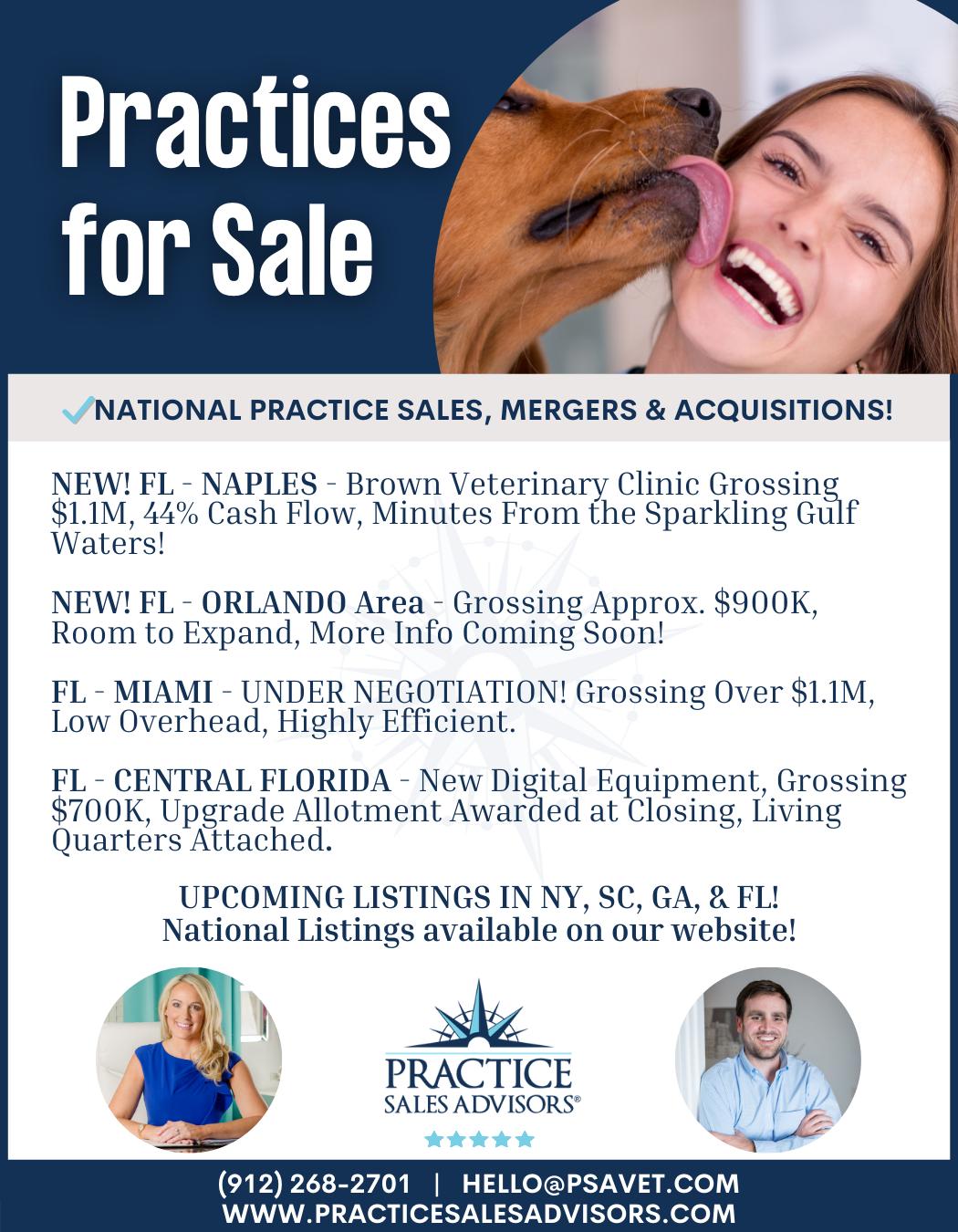







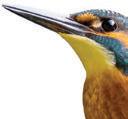





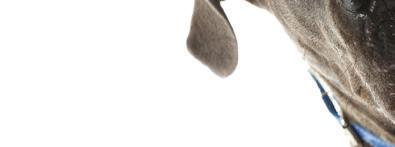
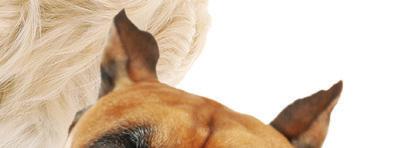


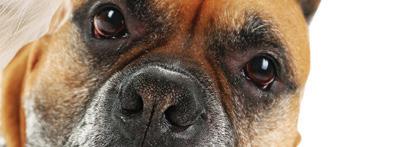


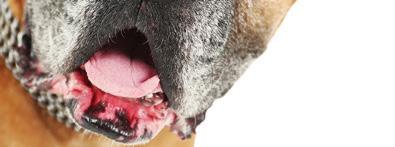

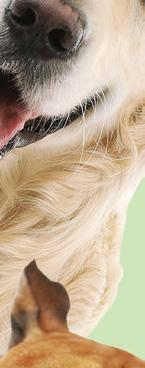
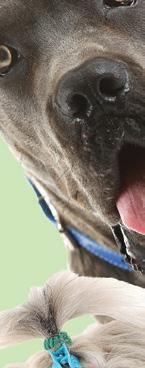
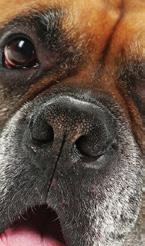










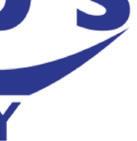











FL, Central: SA Solo Dr Prx. 20 mi NW Orlando. >$1.1M+ gross & growing. Well-equipped w/ 2020 digital x-ray. 2 buildings at 7,534SF on 6.32 acres. Prx & RE (FL12A)
AAHA Listing - NC, Piedmont/Triad/Growing Area: SA Solo Dr. Prx., Approx 3000SF spacious facility. Well Equipped. PRX & RE $625K. Personal income to new owner $165K+! (NC15B)
NC, Northeast, near VA: $1.1M+ gross, 2 dr., SA w/ LA capability. Immaculate, well-equipped facility. Ample room for growth. Established staff. Owner willing to stay 1 year. (NC66G)
NEW LISTING!! GA, South Atlanta: Solo SA Prx w/ RE, Approx. 2,217SF spacious facility. Open 4.5 days a week + 1/2 day Saturday. Well Equipped. Gross $680K+. Prx & RE. (GA48C)

GA, South Central: Grossing >$1.1M+ & growing, 2 Dr practice. Attractive facility kept in immaculate condition with 5 acres and modern equipment. Well-established staff. (GA14F)
GA, Savannah-Coastal: AAHA Listing – SA solo Dr. Prx. w/RE incl 2 acres, Approx 6,184SF spacious facility. 30 years same location, no emergency, 5 days/wk. Updated Equipment. Gross $657K. (GA20S)
SOLD - FL, Clearwater: SA Solo Dr Prx., well equipped, and growing. PRX + RE (FL007A)
1610 Frederica Road, Saint Simons Island, GA 31522 Toll Free: (800) 333-1984 | www.simmonsinc.com
Email: southeast@simmonsinc.com
Licensed in Florida, Georgia, North Carolina, and South Carolina Real Estate Broker



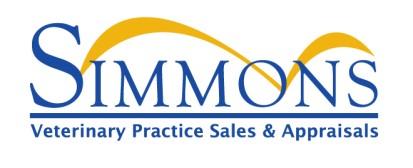
LEON COUNTY: Long-established practice! $744K gross and $129K after -debt income in 2019. RE Included. Seller financing available Reasonable growth potential. - FL97
HILLSBOROUGH COUNTY: Profitable practice! RE Included w/ possible seller financing Projected 2020 gross revenue $980K. After-debt income $180K. - FL99
BROWARD COUNTY : Profitable practice ! Over $1.2M gross and $206K after-debt income in 2019. Leased facility. Heavy traffic and tourist-friendly area - FL100
HARDEE COUNTY: Double-digit growth! E xpecting to gross over $1M this year $203K after-debt income in 2019. RE Included. Seller financing available - FL101
BROWARD COUNTY : Start-up practice in prime location! RE Included! New equipment. - FL102 & FL103
BREVARD COUNTY: Double-digit growth! $1.1M gross in 2019. After-debt income $262K. RE Included - FL104
psbroker.com | 800.636.4740 | info@psbroker.com
North Central FL – 1+ Dr. 20 20 gros s $700k, free standing clinic w/ 2 exam rooms, in-house lb, digital x-ray , great staff. Primary vet in this practice is willing to stay on.
Eastern Panhandle – 1 DR. w/ 2019 gross of $712K, 3200 sq. ft. c linic, 2 exam rooms, in-house lab, digital x-ray. Great small t own atmosphere, only an hour from the Gulf beaches.
Sold- SE Coastal FL - Owner Financing for a qualified buyer, Solo Dr. 2019 gross $688k , 6100sqft office and boarding space.
Equine Practice – Brevard Co.- Rare opportunity to buy a turnkey Equine practice on the central east coast. 1 to 1.5 Dr. 2019 gross $670K. Barn, stalls, treatment area, paddocks, offic e. Motivated owner...any offer will be cons idered.
New- S.E. Florida- Solo Dr. Prx with huge growth in 2020... $692K..Lease space in high growth area west of the Turnpike. 2 exam rooms, digital x-ray , in-house lab , great clientele. Owner is ready to retire.
S.E. Florida- This solo Dr. Practice is primed for growth grossing $550K on part-time effort. 1800sq.ft. lease space, 3 exam rooms , in-house lab, digital x-ray and more. Affluent area with great c lientele.
